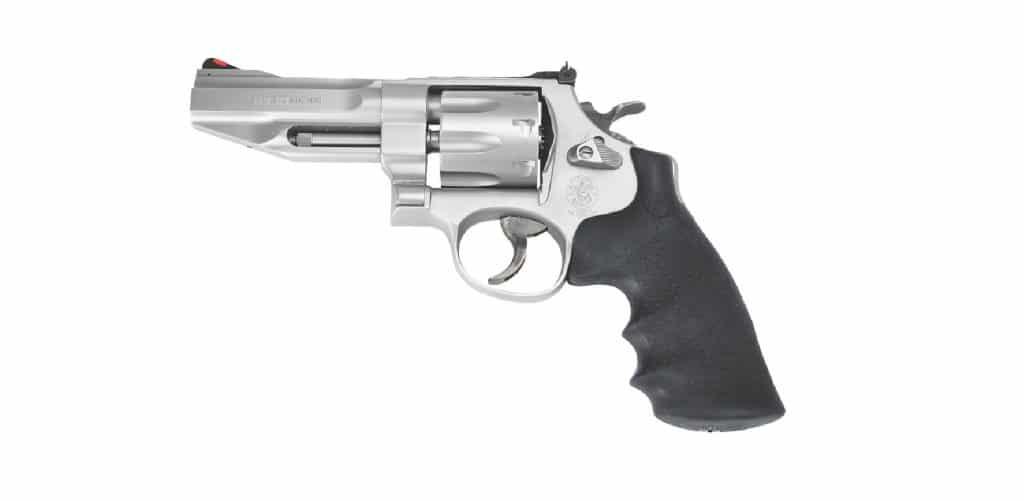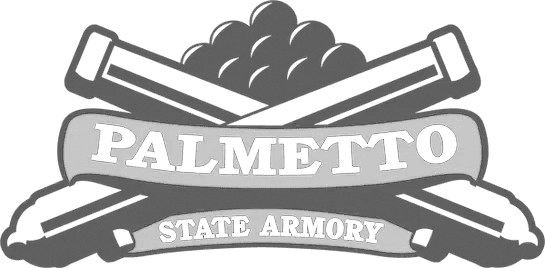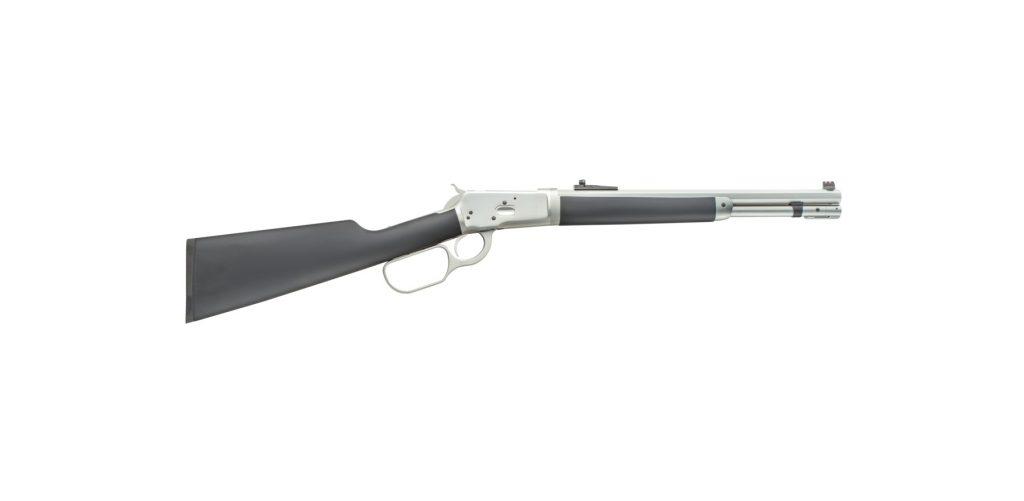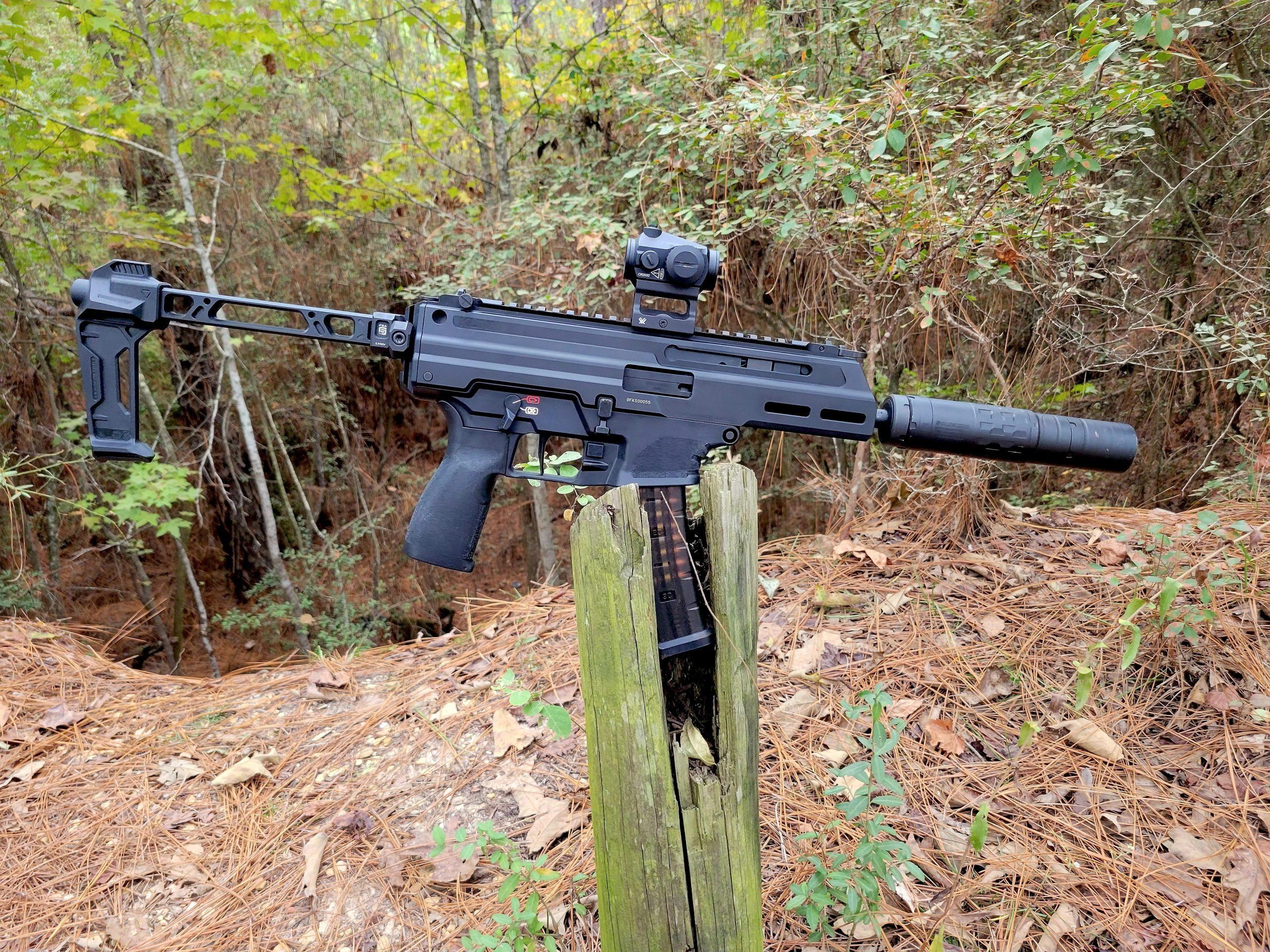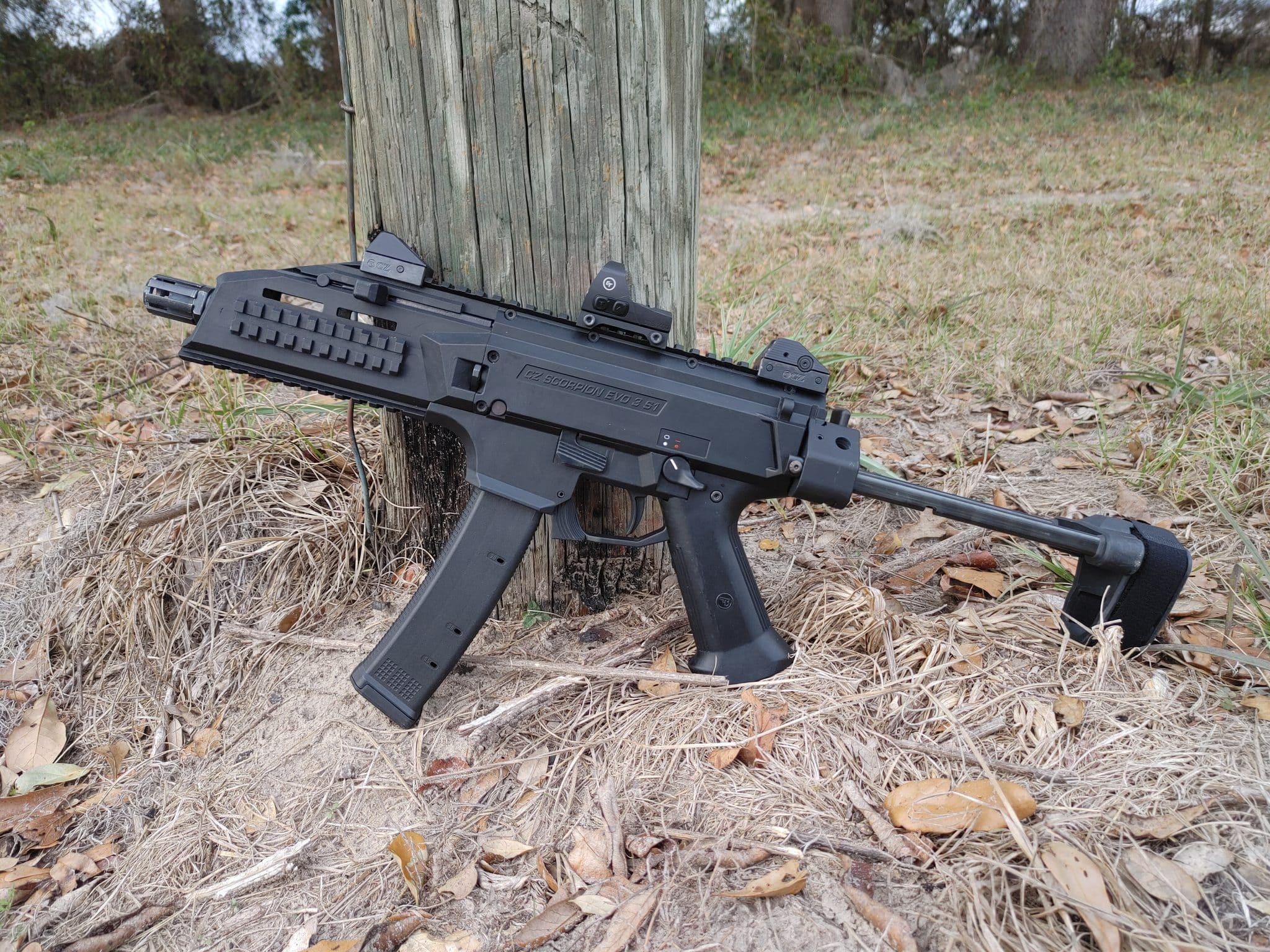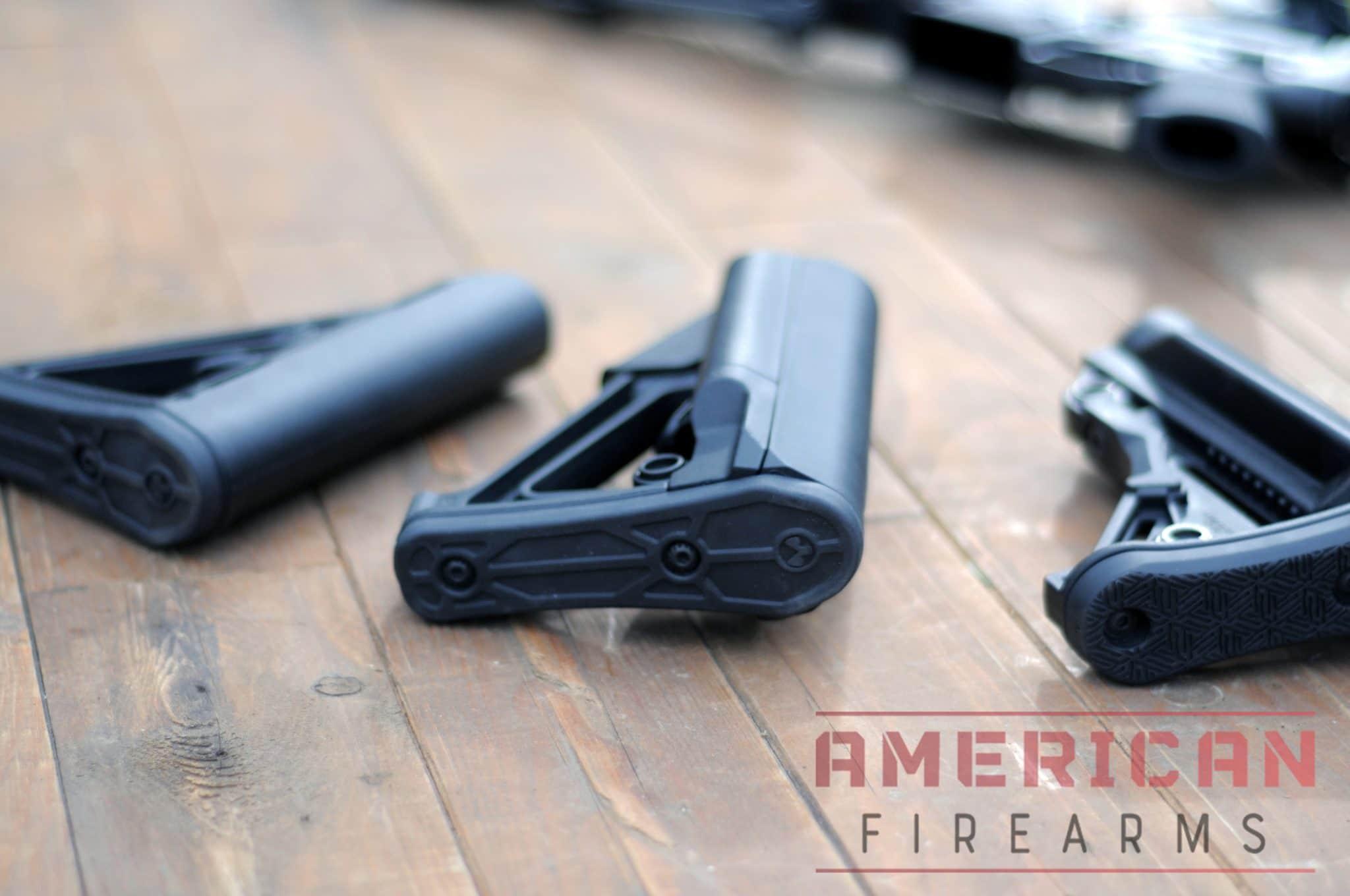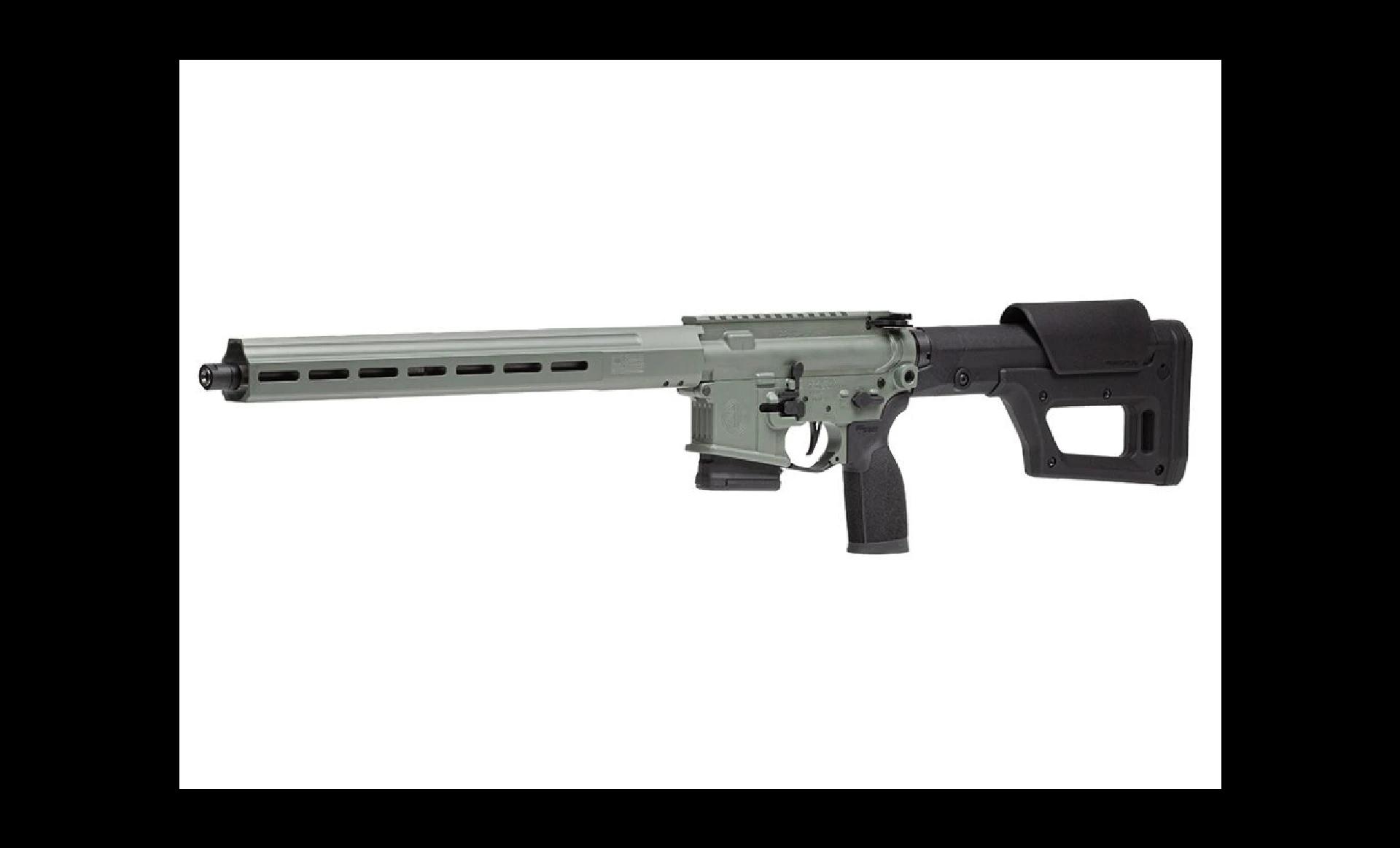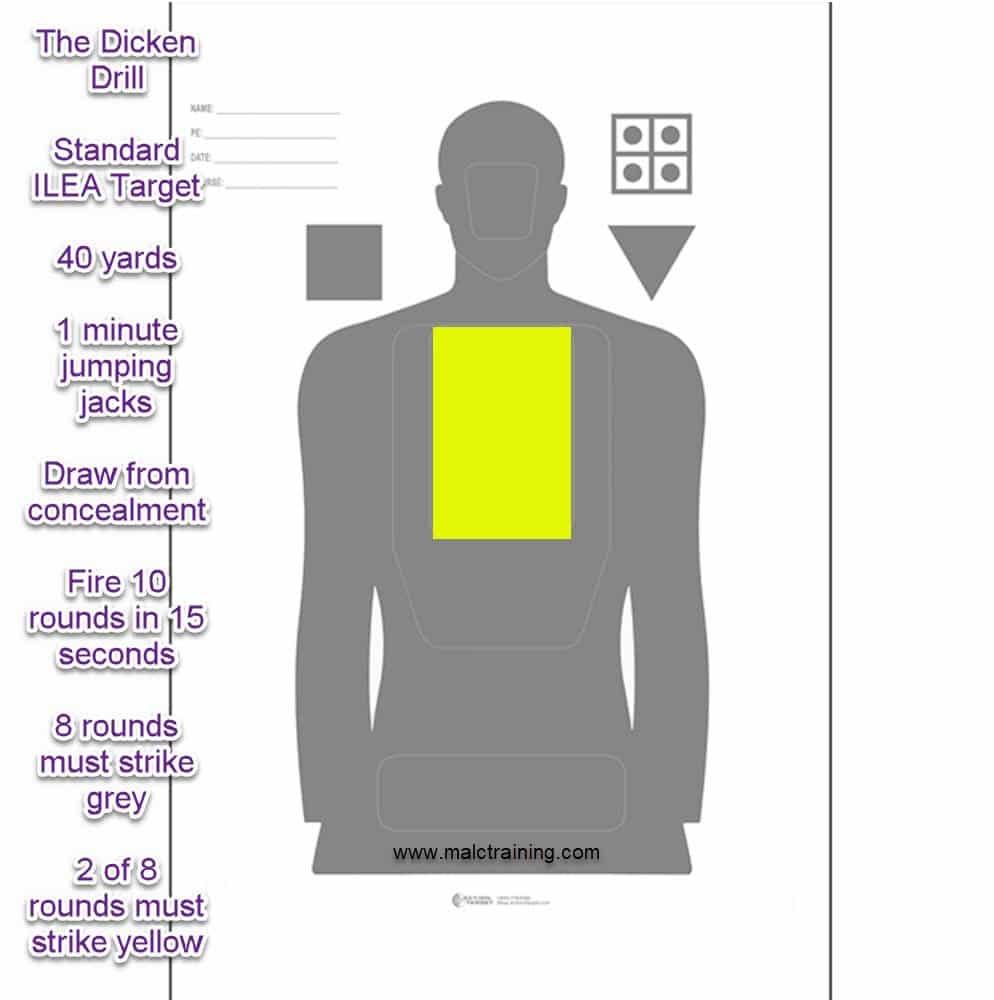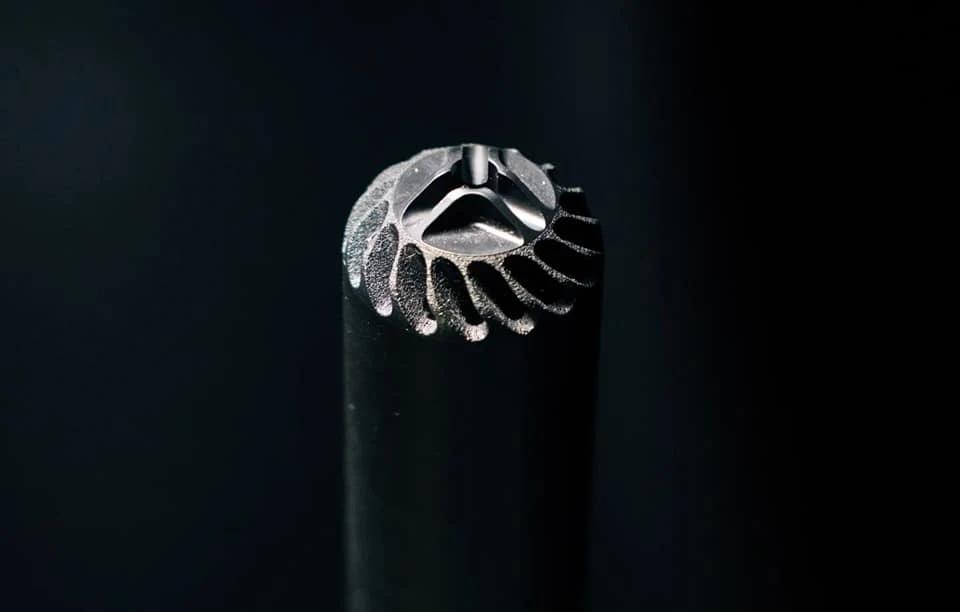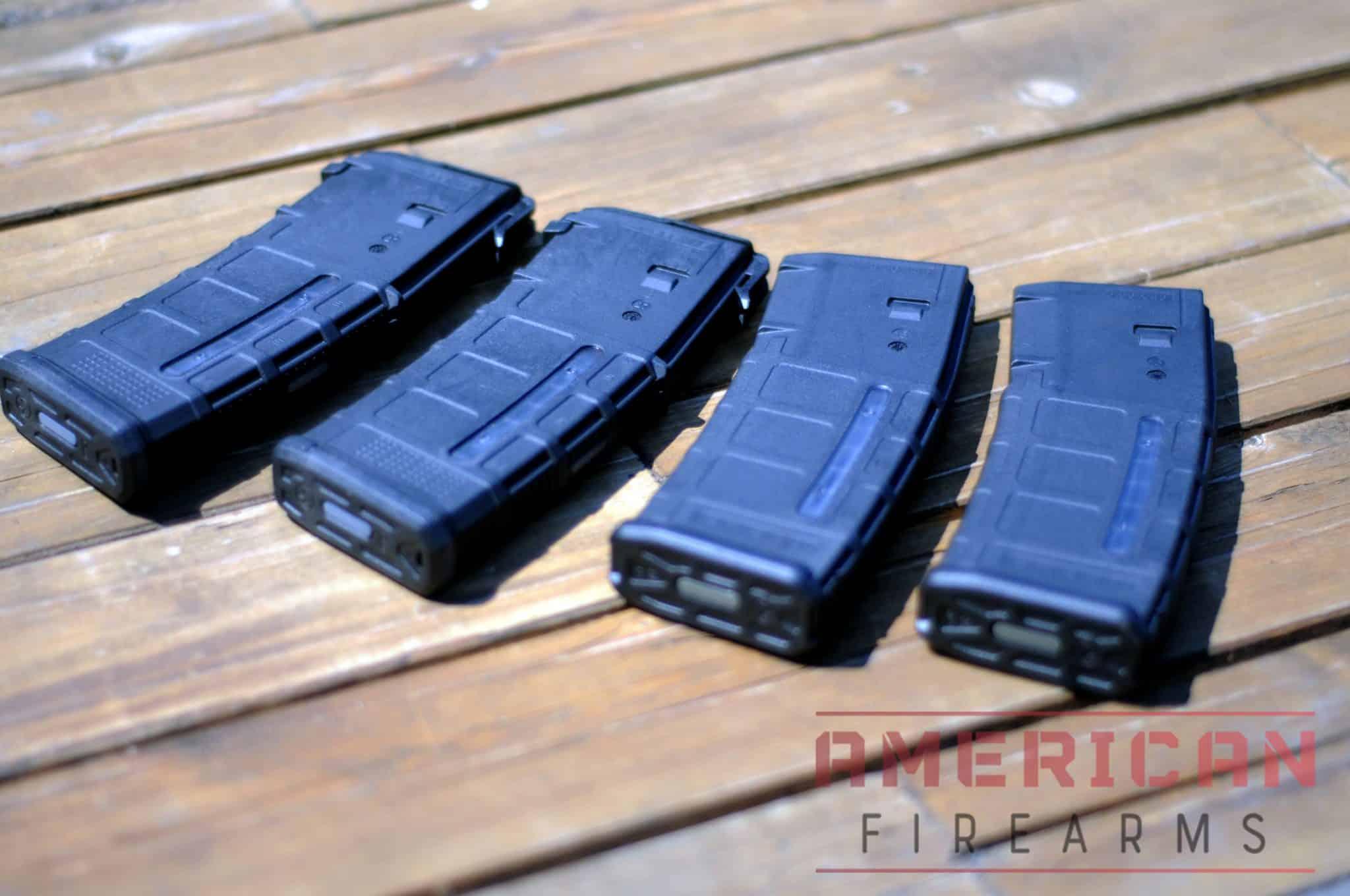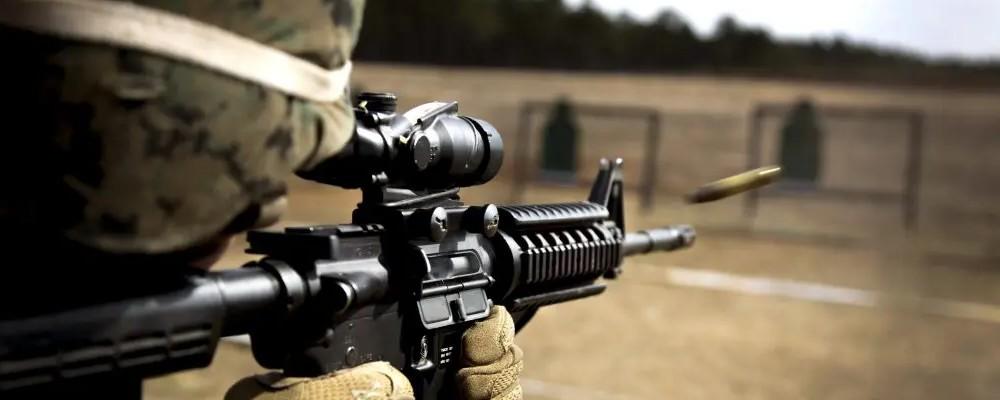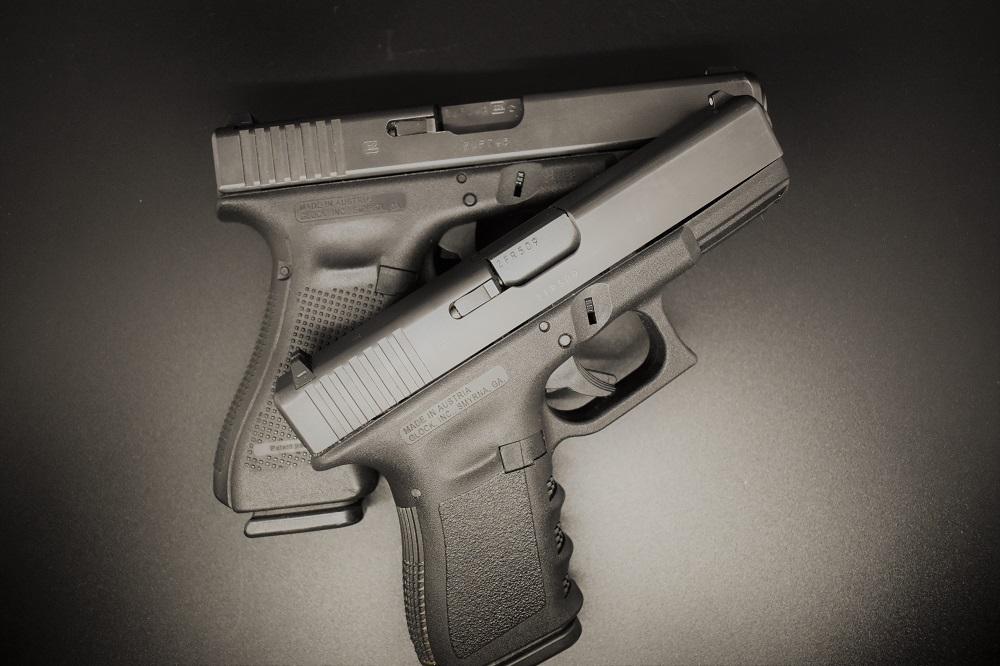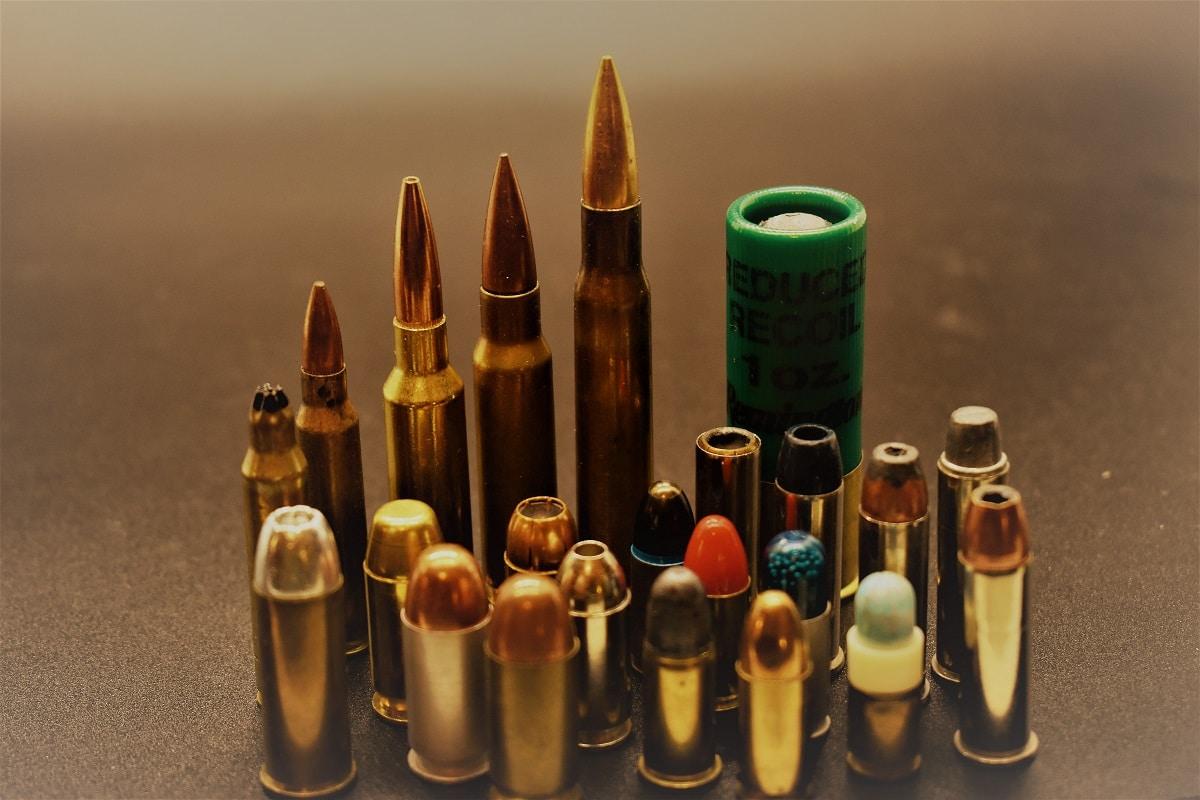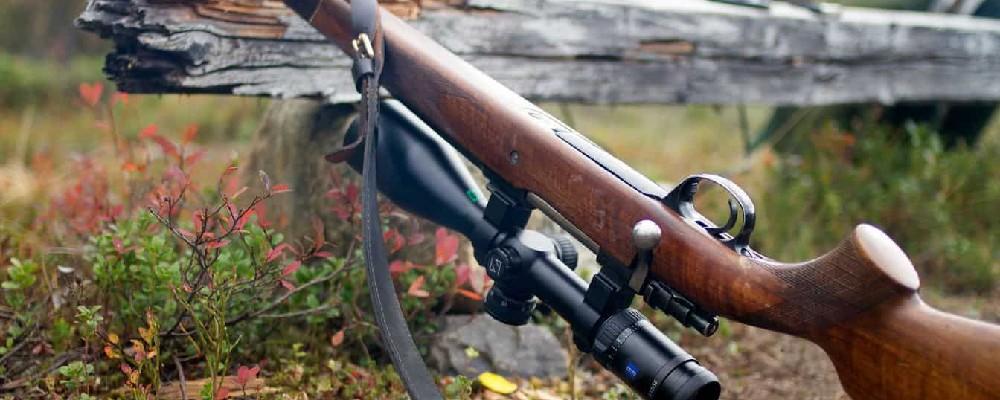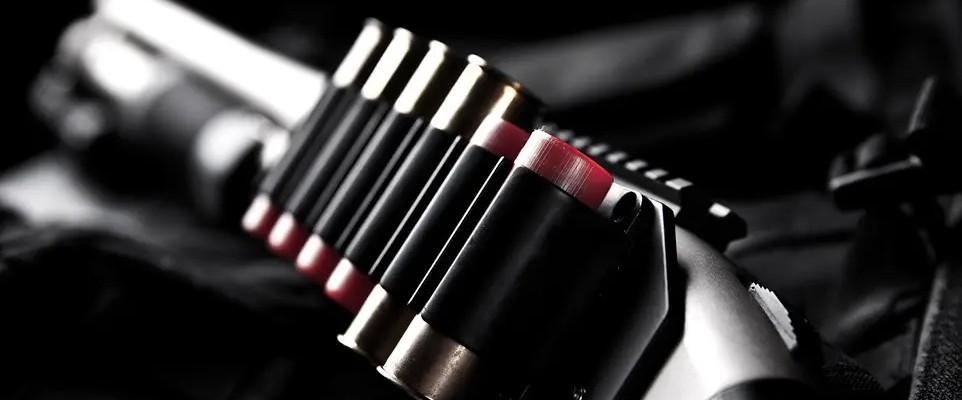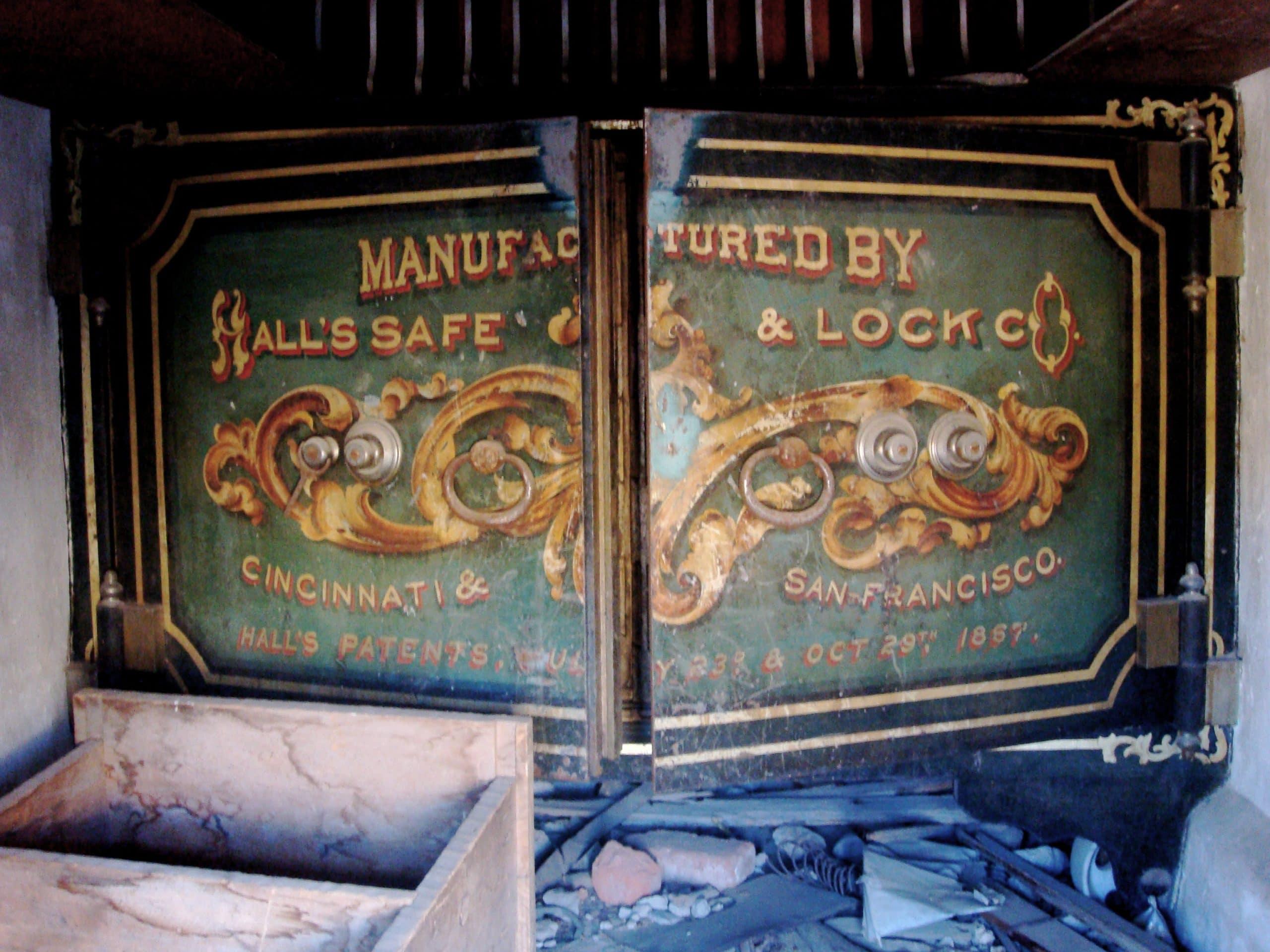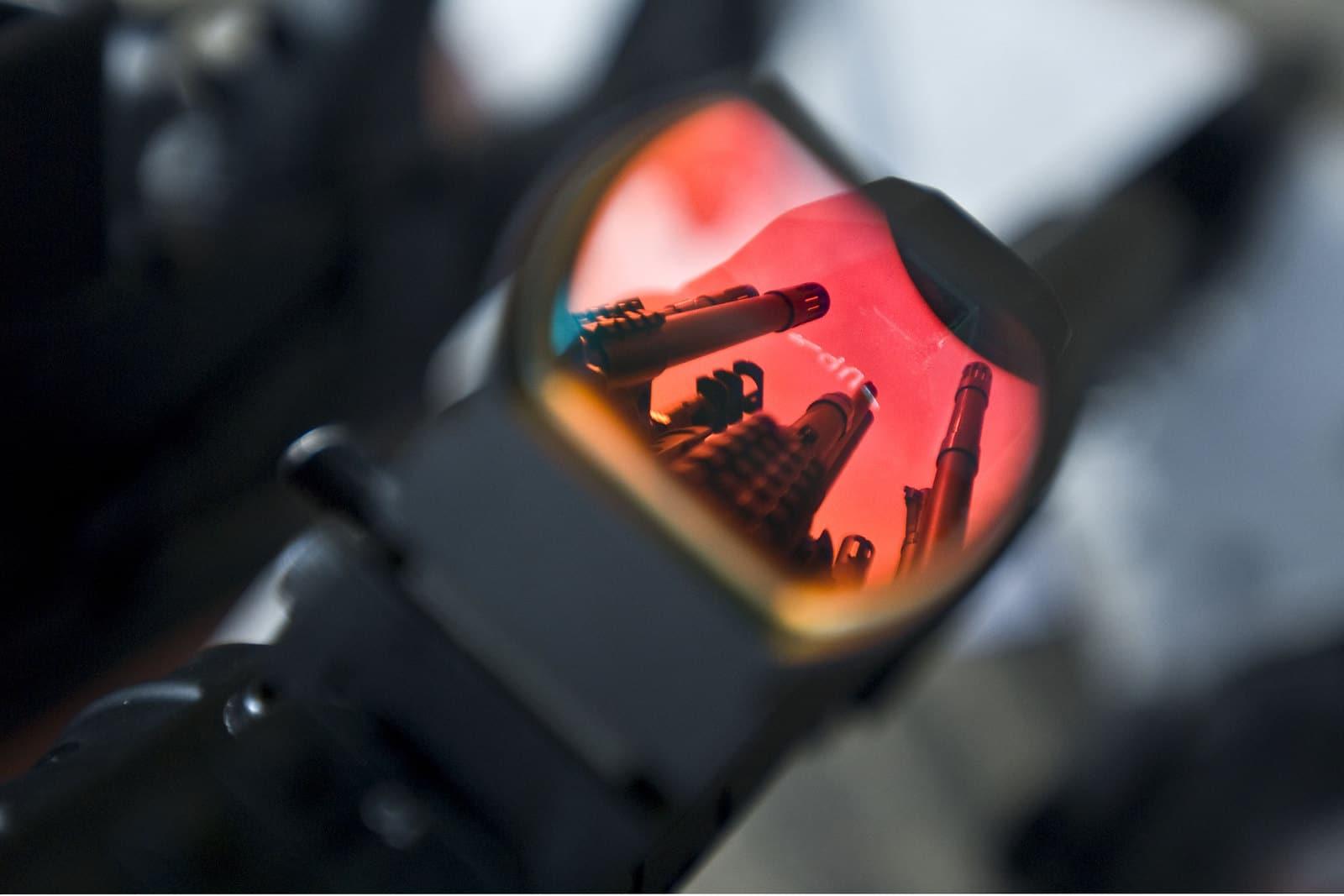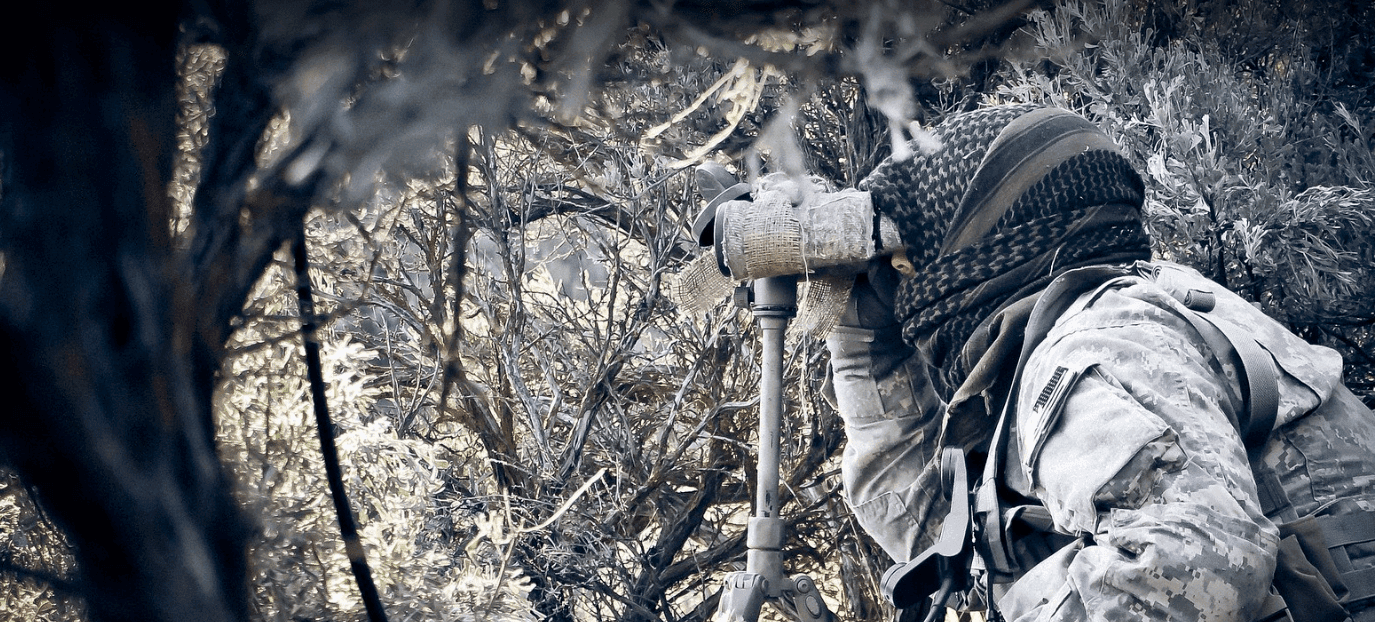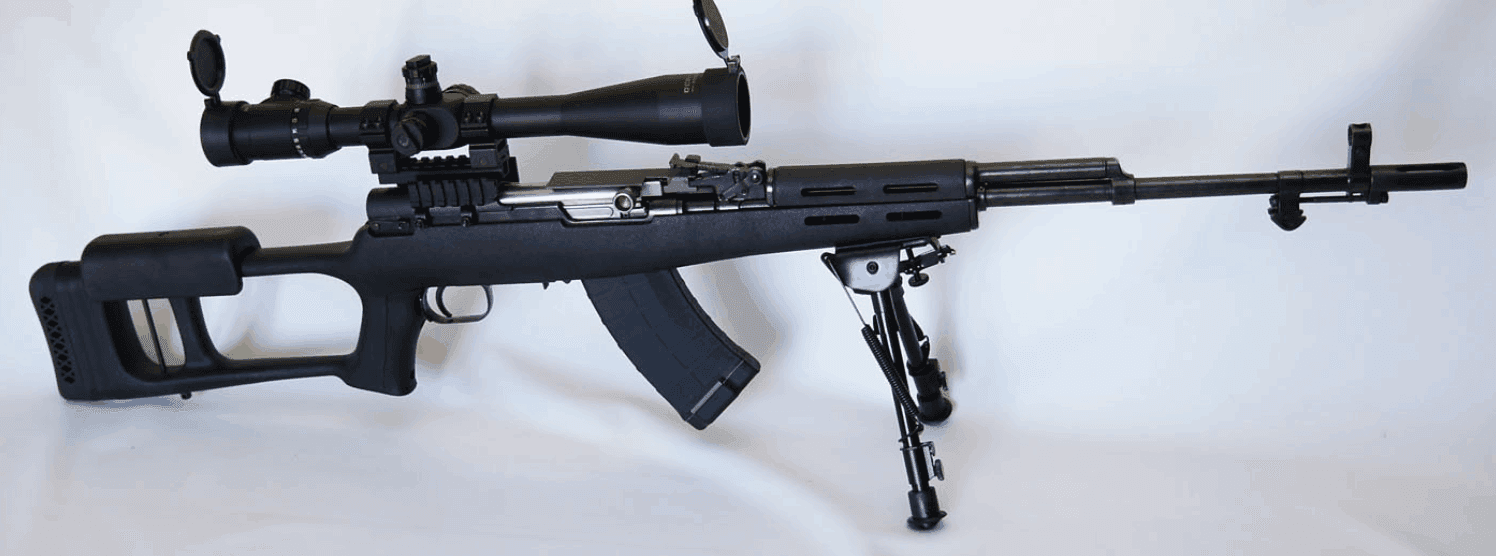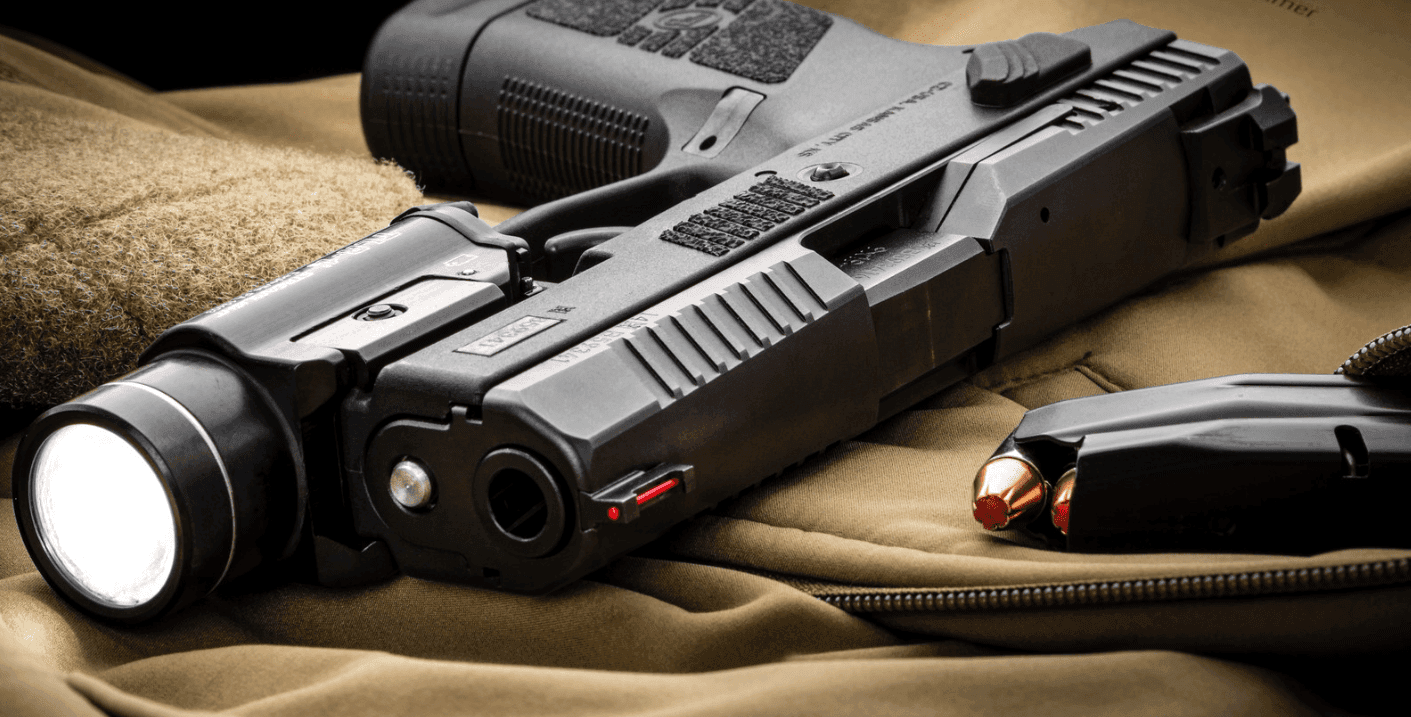The Best .357 Magnum Guns
Written By
Megan Kriss
Expert Contributor
Edited By
Michael Crites
Licensed Concealed Carry Holder
Share:
Products are selected by our editors. We may earn a commission on purchases from a link. How we select gear.
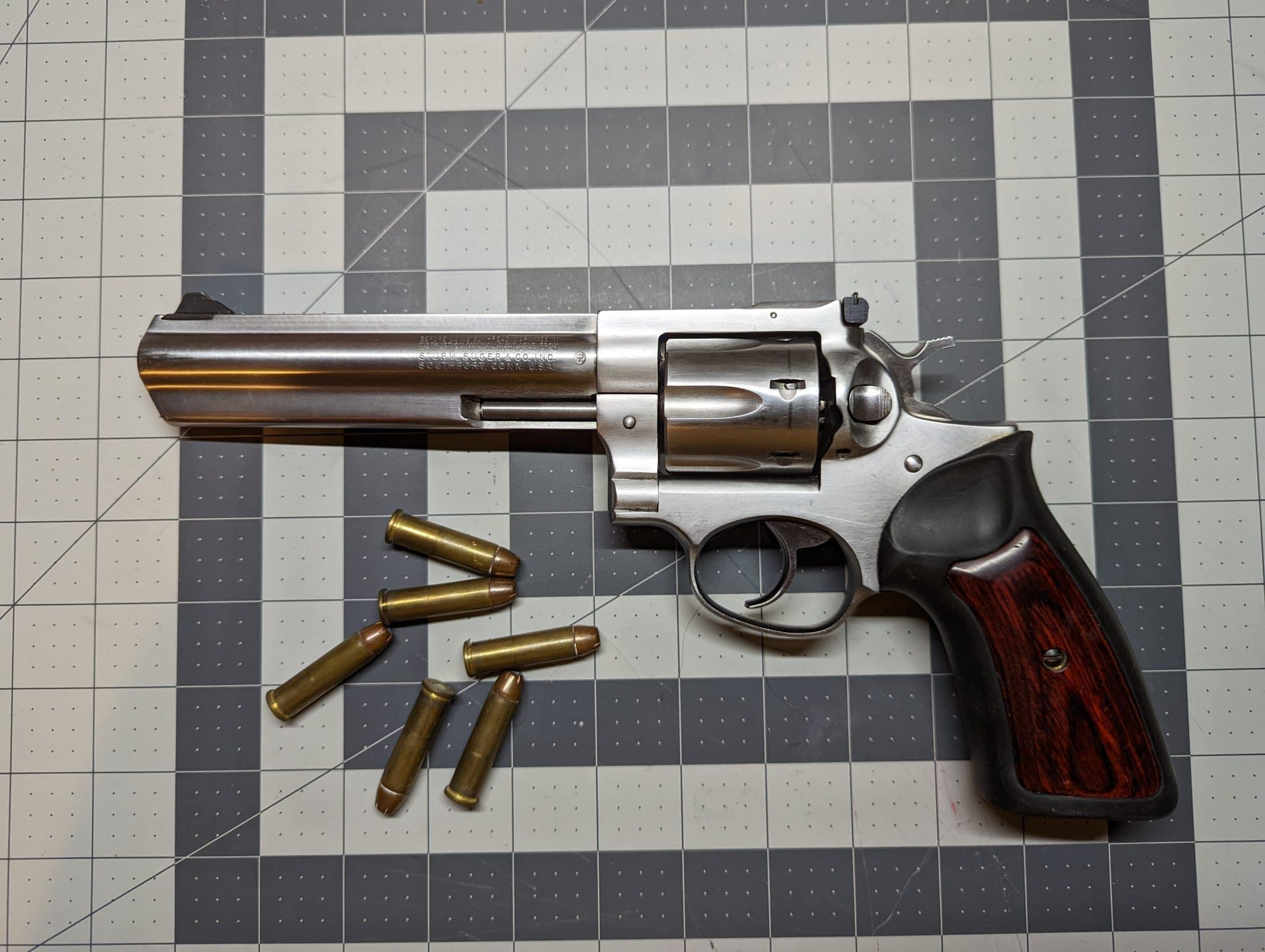
Updated
Jul 2025
The .357 Magnum is an American classic and has been a popular round since its introduction nearly 90 years ago.
It’s a powerful round that doesn’t quite stray into “oh God my wrist” levels of recoil like some of its magnum brethren, but it still has a legacy of reliably handling a variety of game animals as well as two-legged threats.
Because of that popularity, there are a huge number of .357 guns out there, which can make choosing the best one a bit of a challenge.
Whether you’re looking for a hunting revolver, a defensive carry option, or an old-school lever gun to blast away with at the range, there’s something out there for every shooter and every occasion. The only problem is: how do you choose the best .357 gun for your particular needs?
In This Article
History of the .357 Magnum
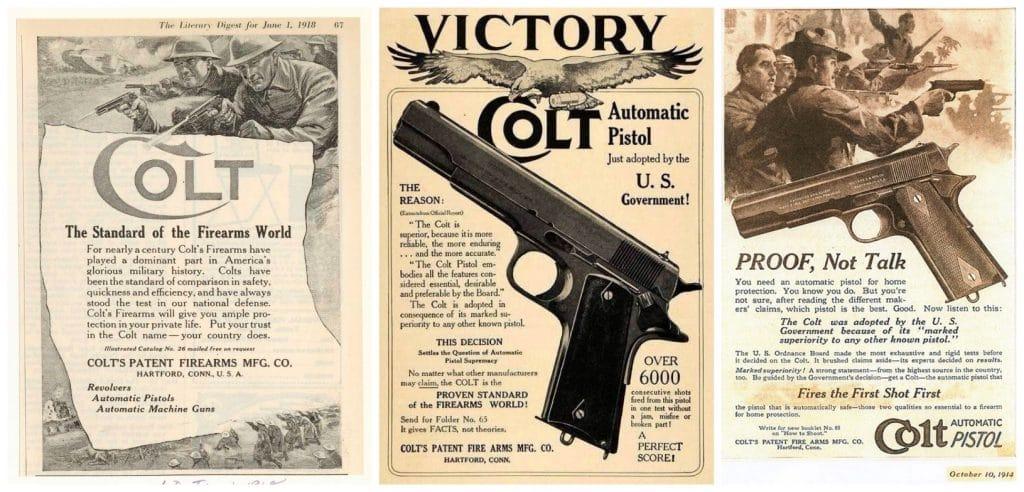
The venerable .357 Magnum has its origins in the Bonnie and Clyde era when law enforcement (and to a lesser extent the military) began looking into handgun rounds that could penetrate car doors, as well as some early forms of body armor that criminals were wearing.
One such answer to these problems was Colt’s .38 Super cartridge. This round was produced starting at the tail end of 1920, and it was designed primarily for use as a black powder cartridge with 1911 style handguns.
In fact, the .38 Super is still a hot competition round and tends to do very well in IPSC and other handgun competitions because of some gaming of the power factor scoring, but that’s a story for another day.
Going back to the early 1930s, a number of law enforcement agencies began looking favorably on the .38 Super once it became widely accepted that it was, in terms of penetration, a marked improvement over the .38 ACP and .38 Special rounds that were popular at the time.
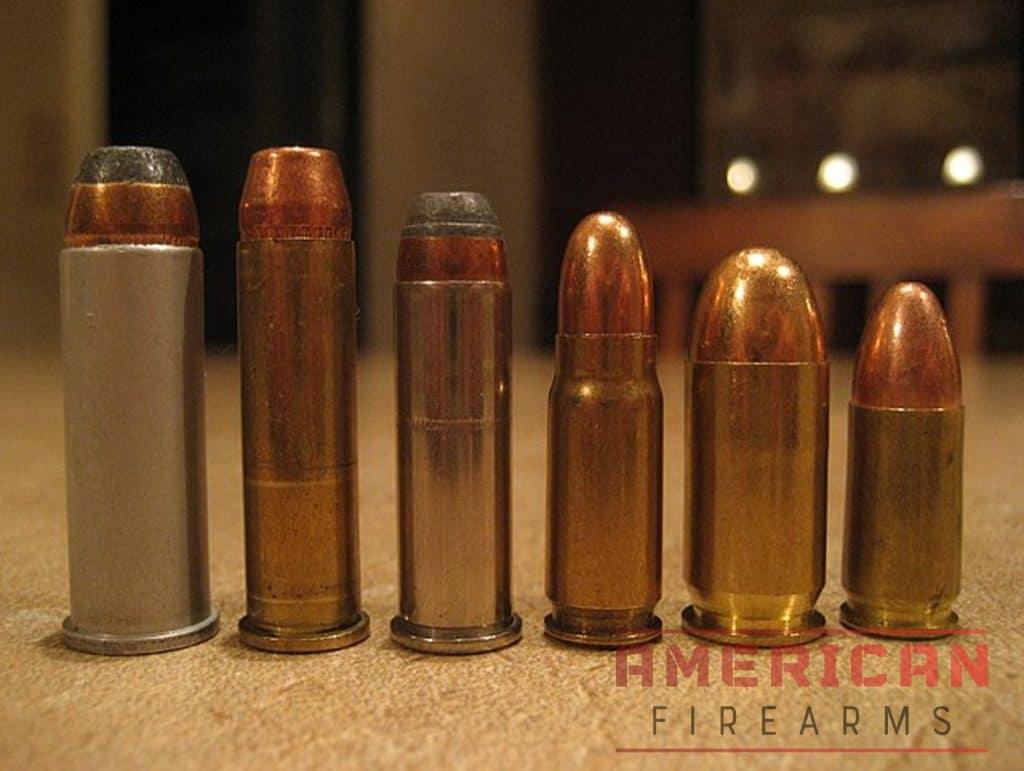
Now, seeing the attention the .38 Super was getting, a number of gun industry types, the entire development wing of Smith & Wesson included, decided to get in on the action with a rimmed cartridge that could compete with the .38 Super in a large frame, double-action revolver format.
They started with the .38 Special and loaded it hotter and hotter until they reached the pressure limit of the .38 revolvers of the time. To fix this, S&W took their .44-caliber revolver frames and chambered them in .38 Special, and gave it a 5” barrel.
They called this beefier blaster the .38/44 Heavy Duty and released it to a decent amount of fanfare in the Spring of 1930. It was a great success with rural police and highway patrol, and a year later S&W released the hunting-focused .38/44 Outdoorsman, which had a longer barrel and adjustable iron sights.
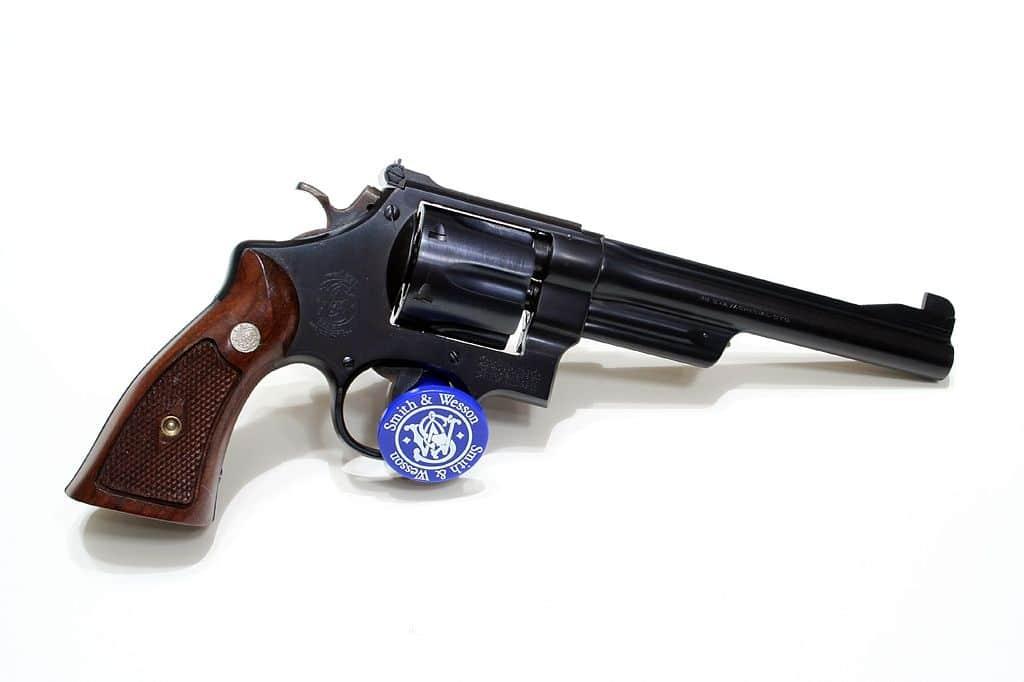
Of course, we gun enthusiasts are almost never satisfied and are prone to demanding more and better from the firearms industry, so of course, we couldn’t leave well enough alone.
Avid tinkerer and wildcatter Elmer Kieth, and notable writer and NRA Technical Staff member Phil Sharpe would then go on to separately work on the problem of getting more performance out of the .38 Special and the .38/44 platform.
As the years went by, Keith shifted his focus to other calibers and left his bullet designs and musings on .38 Special case dimensions out in the wild — he went on to design the Keith-style bullet, which shifted the mass of a bullet to outside the cartridge case, providing more room inside the case for powder — but Sharpe continued the quest for a better .38-caliber round and handgun.
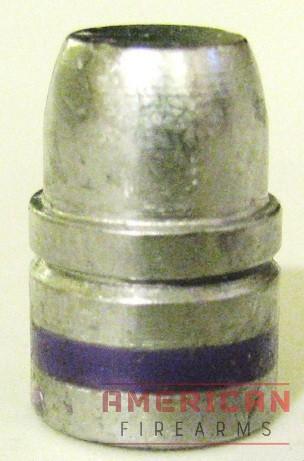
He would eventually team up with S&W Vice President Doug Wesson (grandson of founder Daniel B. Wesson) as well as the ammunition division of Winchester repeating arms, who saw promise in the early work Sharp and Keith had put together.
Over the next few years, and after much tinkering and testing, the .357 Magnum we know today was created.
In 1934, the new .357 Mag was released (along with Smith & Wesson’s Registered Magnum — two guesses as to the chambering…) featuring a .125” longer case than the .38 Special (to help prevent accidentally loading a .357 into a .38 Special revolver), a (9.07 mm) bullet diameter and using denser smokeless powder had the ability to push a 158-grain bullet to over 1,500 fps out of a handgun. With typical bullet weights in the 100 to 200 grains (6.5 to 13.0 g) being the common range, for options from light target loads to heavier loads designed for hunting or self defense.
This of course immediately thrilled both law enforcement and civilian shooters alike, and the “Magnum era” was off to the races.
Why use a. 357 Magnum?
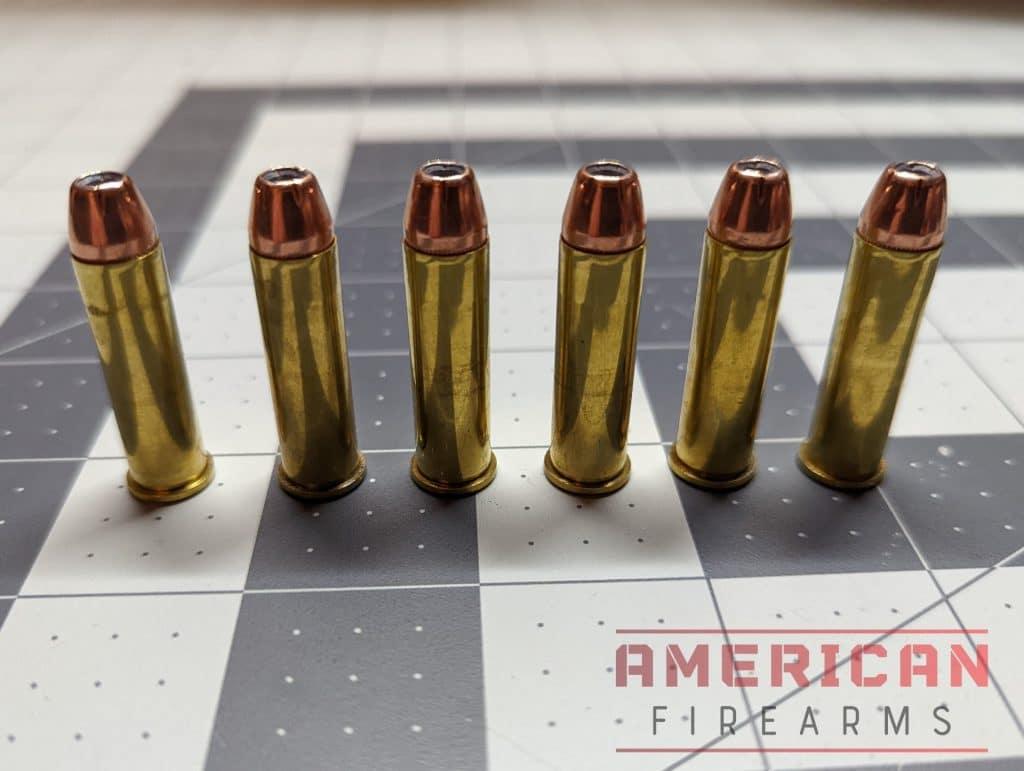
Of course, these days most law enforcement members don’t really need to shoot through the steel door of a bootlegger’s 1930’s Ford Coupe, and modern cartridge development, at least on the LEO side of things, has left the .357 Magnum behind.
But that doesn’t mean the .357 is outdated.
Far from it, in fact. It may not be the go-to round for beat cops and G-Men anymore, but it is still a well-loved round and there are an amazing array of great guns chambered in the round, especially among hunters and outdoorsy folk.
A Multi-Purpose Hunting Round
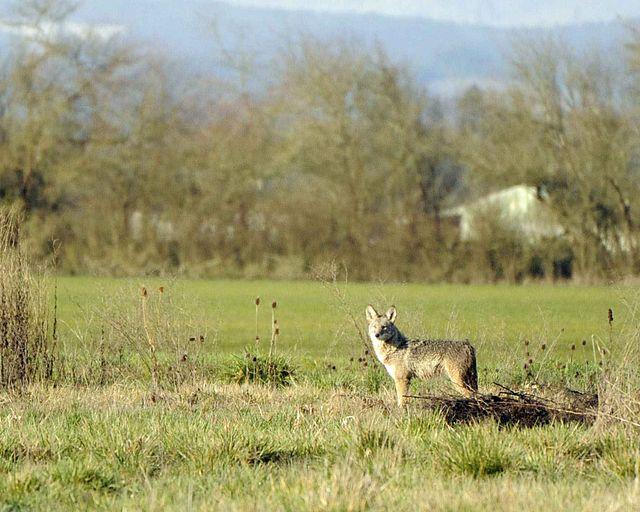
It’s a great round for brush hunting thin-skinned game such as whitetail or smaller sheep species, and it has been a great varmint slayer as well. For popping the occasional coyote out on the range, it’s perfect.
Of course, it also rocks as a self-defense caliber, and while you lose the capacity and quick-reloading capability of a modern semi-auto, the flexibility of having the option of a light-recoiling .38 Special or a heavy-hitting .357 Magnum coming out of the same gun is appealing to many.
Fun At The Range
It also makes a really fun (and practical) target shooting option, which is what I find myself using it for the most.
There’s something just incredibly satisfying about blasting away at tin cans, clay pigeons, and old soda bottles with a big, heavy stainless steel frame revolver. The slow fire rate helps to keep the cost of slinging .357 rounds down a little bit, but you still have the option of shooting the cheaper .38 Specials too.
This versatility is one of the things shooters love most about a .357 Magnum revolver. You have the cheaper .38s for target shooting, practice, or just playing around, and then you can switch to the more powerful .357s for hunting or self-defense.
Lever-Action .357s Are Worth Your Time Too
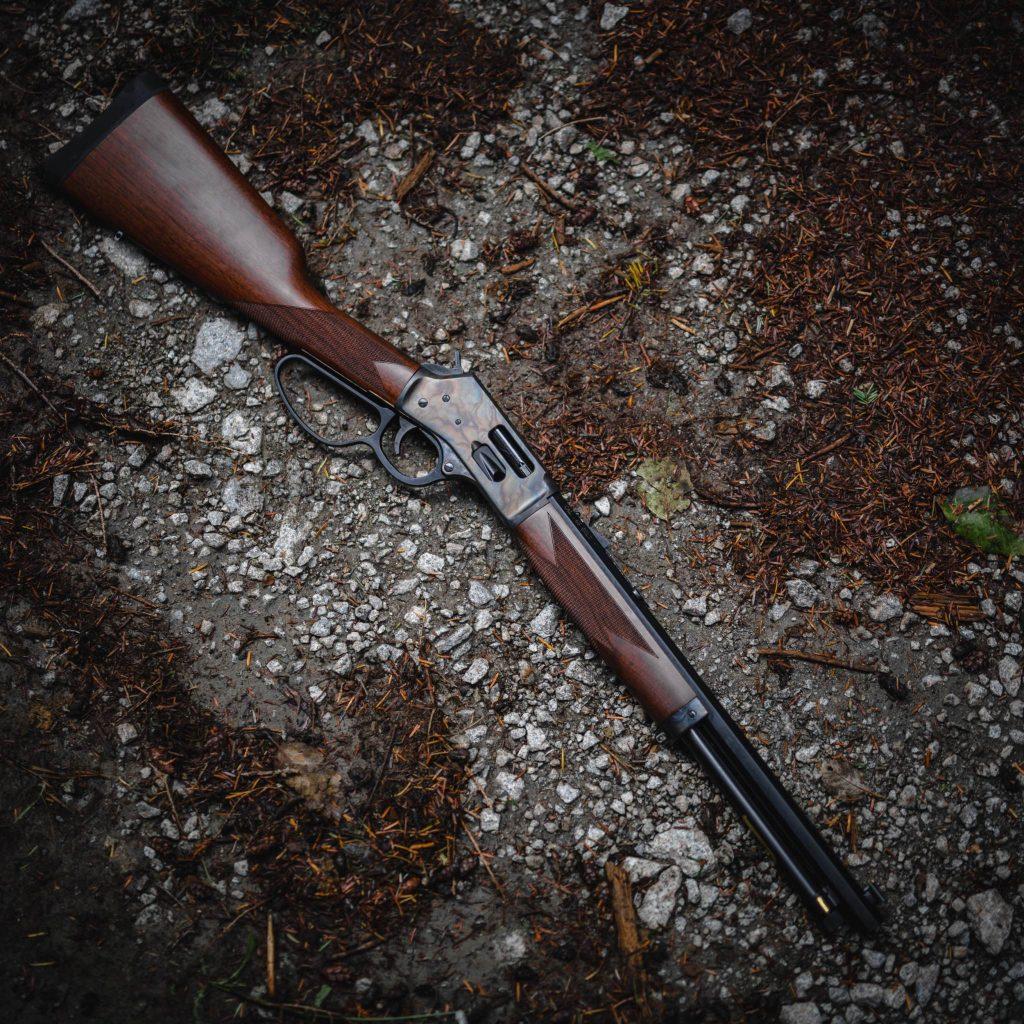
Finally, if we move things over to the world of lever-action rifles, the .357 Magnum truly starts to shine. Out of an 18” barrel, you can easily get 1700 fps with hot modern loads, which gives you the energy to deal with game such as black bears and wild hogs at close ranges.
While nobody will be packing their lever action for concealed carry, the energy they provide makes the .357 a great option for hunting a variety of game in dense cover, making it a popular choice for areas like the swampier parts of the Southeastern US and the denser parts of the Midwest where shots are frequently under 200 yards, where modern .357 ammo shines.
Types of .357 Firearms
There are two main types of firearms that shoot .357 Magnum, revolvers and lever-actions.
.357 Revolvers: An American Classic
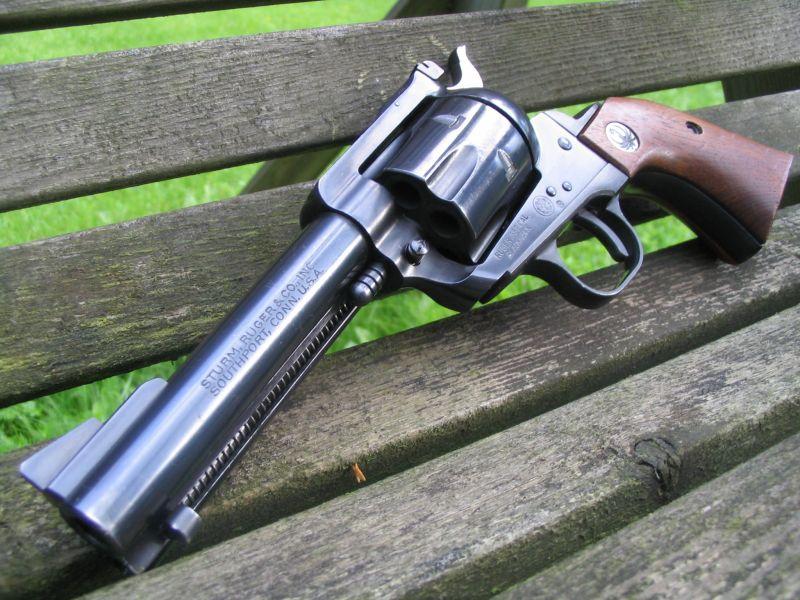
Most revolvers have a capacity of 6 or in some cases 8 rounds, and have a rotating cylinder that revolves (hence the name) to line up a new cartridge to be fired. This is a classic design, and a pretty integral part of American history.
.357 Revolvers in particular were popular with police for decades until they started being supplanted by more modern semi-autos in the 1960’s and 1970’s.
Lever-Action .357s: Also An American Classic, Sorta
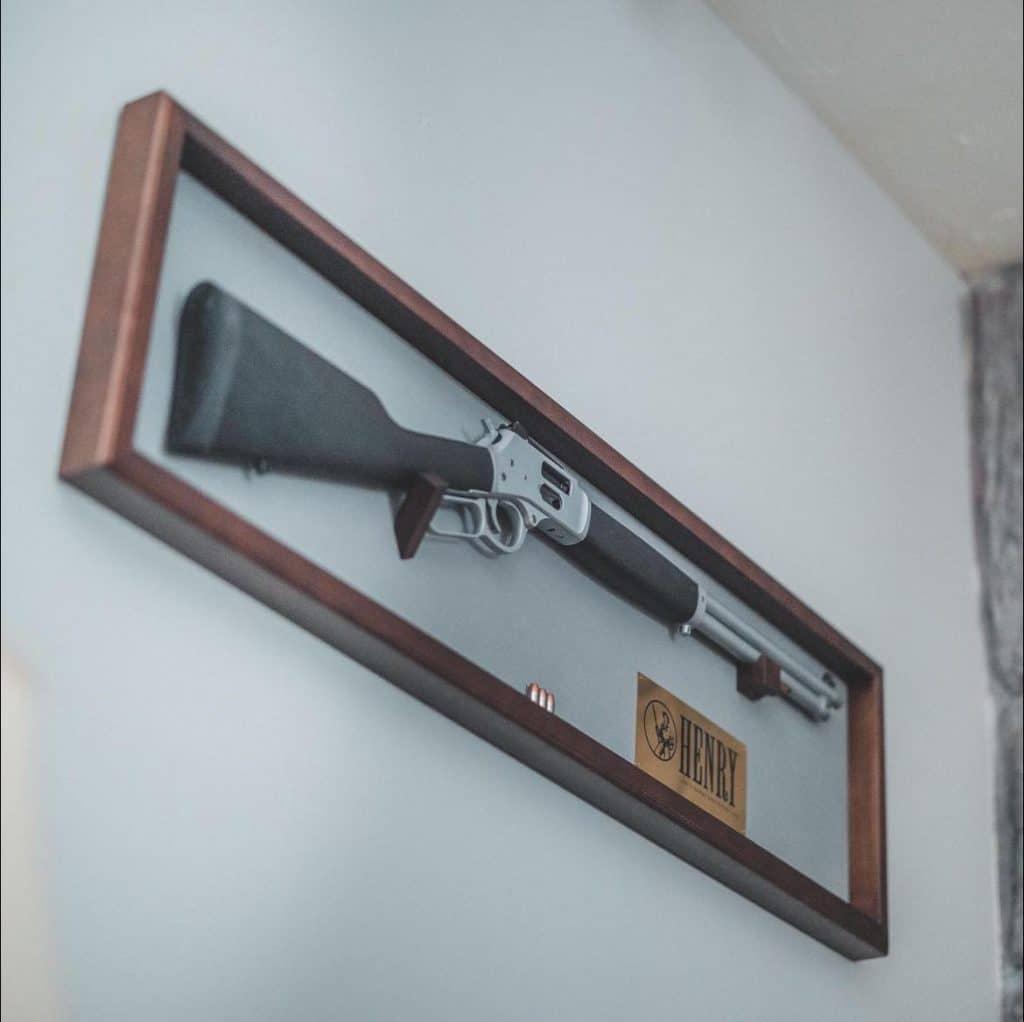
Lever-Action .357 have been around for a while as well, with older Marlin, Winchester, and Henry Models showing up on the market in the later 1930s.
Today, these guns are popular with hunters, as well as those who just like the feel and experience of shooting a classic lever-action. The .357 is especially nice in this capacity as it’s a good bit cheaper than most other lever-action rifle rounds, and softer shooting to boot.
A Note About Semi-Autos
Given the length and rimmed case nature of the .357 Magnum, it doesn’t really lend itself well to a semi-automatic format.
That hasn’t stopped some smart folks from making it work in a semi-auto though. In particular, the Coonan semi-auto stands out for it’s 1911-style design. While undoubtedly cool, only a few thousand were ever made, making it a bit of a collector’s item.
The other option is the Desert Eagle .357 which, while excellent, didn’t quite make the list due to some reliability issues I had with the one I tested. Now, that was a range gun with a lot of miles on it, and I was shooting old reloads, but generally the gun is a little niche for me to have much time with it.
Now, Magnum Research, if you want to get one of these out to me, I’ll be more than happy to take a look at another one.
Must-Have Features
When choosing your own .357 Magnum, there are some things I’d suggest you look at first.
Double-Action Revolvers Rock
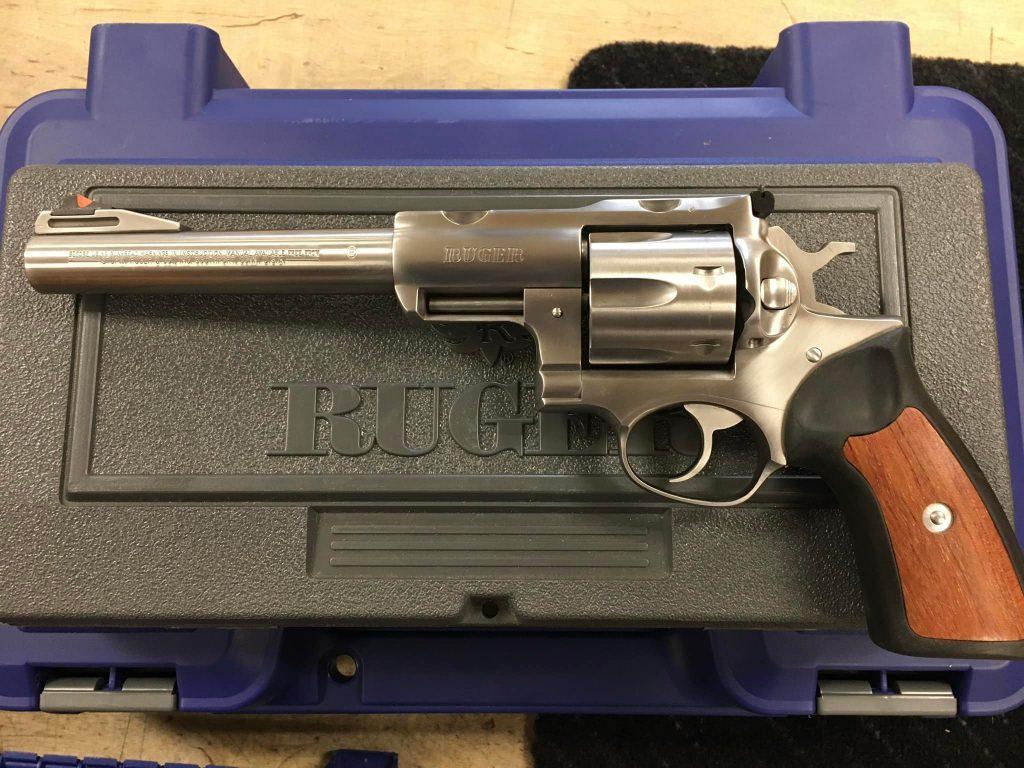
First and foremost, if you’re looking at a revolver, I strongly recommend getting a double-action model, unless you’re specifically looking for that old-school cowboy aesthetic. Which is fine by the way, but it isn’t for everyone.
A double-action revolver will allow you to fire more quickly, but still have the option of manually cocking the exposed hammer to get a smoother and lighter trigger pull for those carefully aimed shots, especially at long range.
Since one of the big draws of a .357 Magnum is its versatility, the double-action format is a great choice for a revolver, unless you specifically want the full-on single action revolver cowboy experience for a range gun.
Safety First
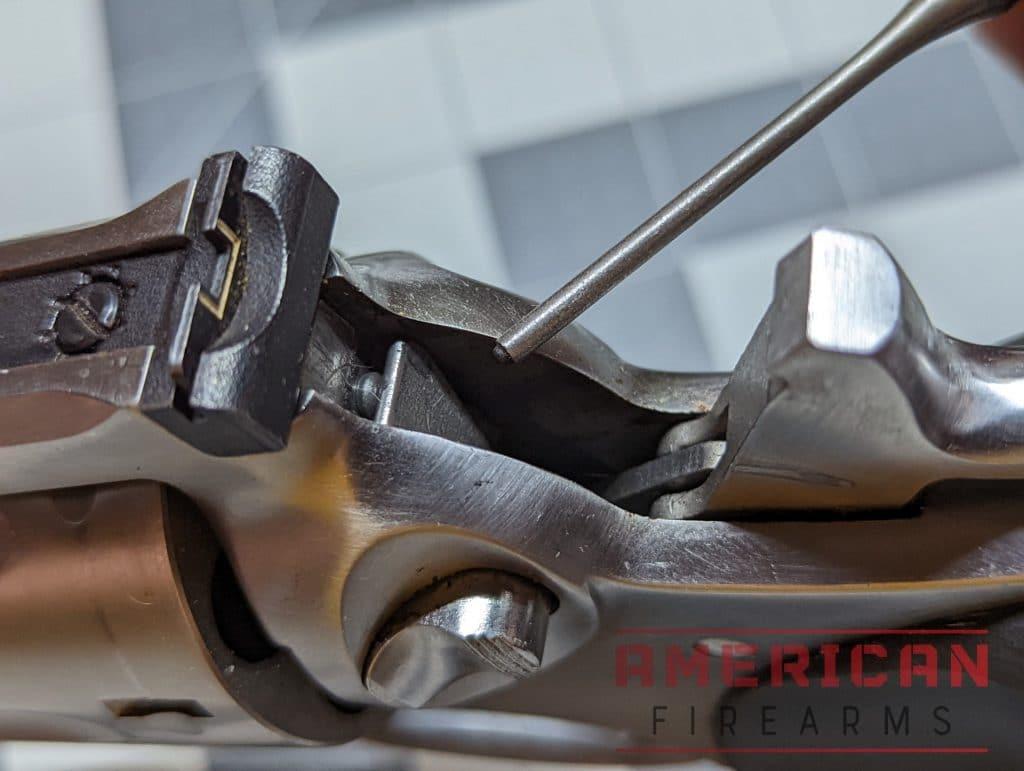
None of the wheelguns on this list have a traditional external safety, but they do all have some extra features that help to keep the shooter and those around them safe.
One common feature that you’ll see is a transfer bar safety. A transfer bar is a thin piece of metal that gets raised into position between the hammer and the firing pin when the trigger is fully depressed. The hammer then contacts this piece, which is what strikes the firing pin.
This is important because the other option is to have the firing pin either attached to the hammer or otherwise directly impacted by the hammer when it falls after the trigger is pulled. And if that’s the way the revolver is set up, then any impact to the hammer could cause the revolver to fire.
Fortunately, most modern revolvers do have this transfer bar, so it’s not a huge deal with most newer guns. You will want to keep this in mind when looking at replicas of older guns, single-action models in particular.
This is why you may have heard “never carry a revolver with the hammer down on a loaded chamber”. You can absolutely do this safely, just make sure your revolver actually has a transfer bar.
.357 Magnum Comparison
Below is my list of the best .357 Magnum guns. I list the best choices in terms of value, performance, design, and cost.
Click on the name to head to the product page, read reviews and check prices or skip ahead to the list of guns.
| Name | Selection | Price |
|---|---|---|
Best Overall | $1,143 | |
Best .357 Hunting Revolver | $1,217 | |
Best First .357 Revolver | $797 | |
Budget Option | $679 | |
Concealed Carry Pick | $703 | |
Best Convertible .357 | $695 | |
Premium Option | $1,799 | |
Best Backpacking Lever Gun | $1,500 | |
Best Overall Lever Gun | $912 |
Gun Reviews
1. Best Overall: Smith & Wesson Model 627 Pro
Specs:
- Caliber .357 Magnum / .38 SW Special P
- Capacity 8
- Barrel Length 4″
- Overall Length 9.75″
- Weight 40.7 oz
First up, we have the Smith & Wesson Model 627 Pro, which is what comes to mind when I think of a revolver chambered in .357 Magnum. It comes factory-tuned from S&W with a few extra features like a fiber-optic front sight and an even smoother trigger.
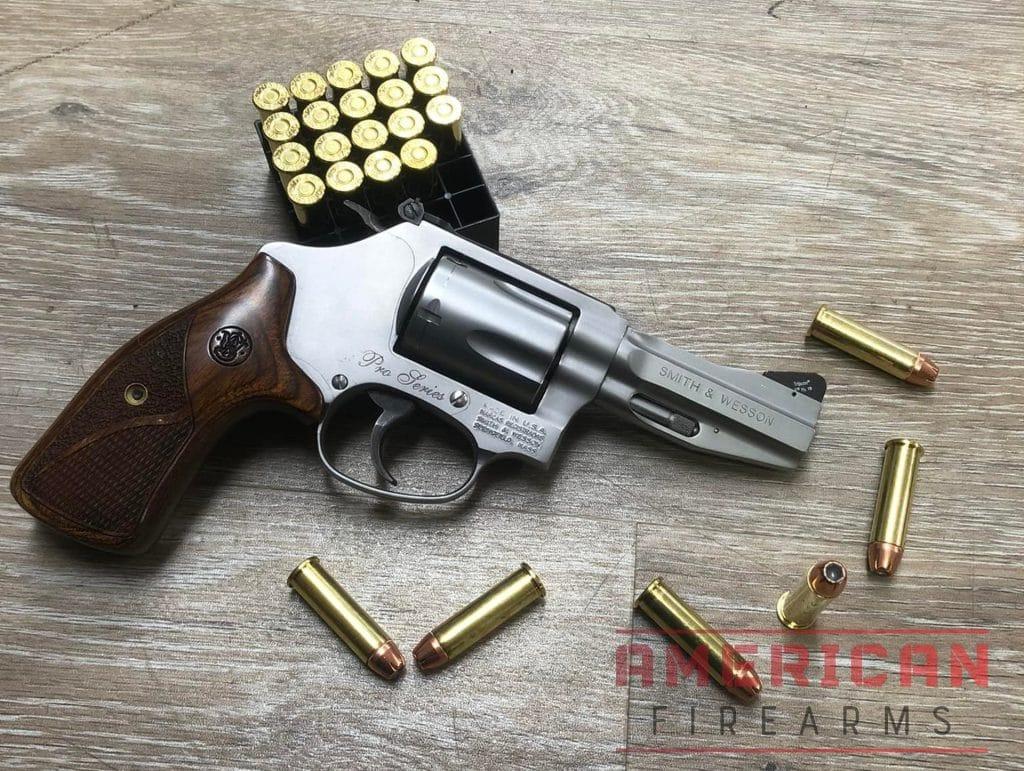
Smith & Wesson is a byword for quality when it comes to revolvers, and they’ve had 170 years to perfect their approach to making excellent wheelguns. Their letter frame revolvers (think L Frame, J Frame and K Frame, etc.) are the archetype of the modern wheelgun. The Model 627 is one of the premier examples of that experience being brought to bear.
It’s an 8-shot DA/SA revolver with a fluted cylinder, and it utilizes S&W’s popular steel “N” frame. This is a very smooth-shooting revolver, and one of my personal favorites. It has a 4” underlug barrel length that is just about perfect for target shooting or home defense along with a gold bead front sight and adjustable rear sight.
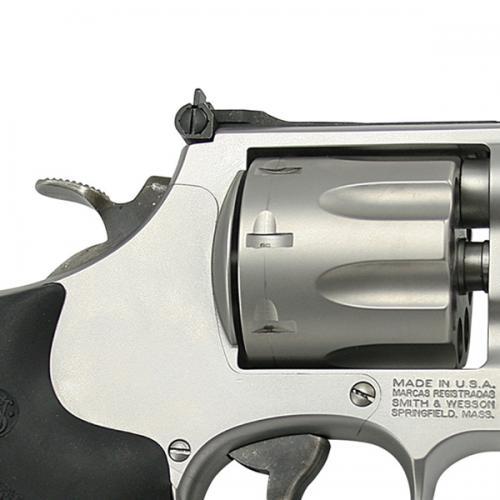
Overall, this thing just rocks and if you can get over the price tag, you’ll find that it’s worth every penny.
2. Best .357 Hunting Revolver: Ruger Super Redhawk
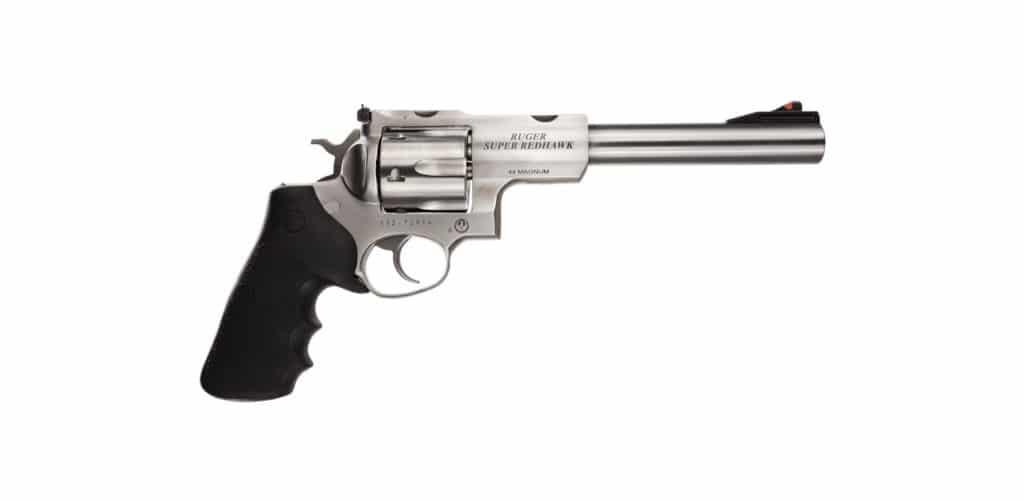
$1113.99

27
AVERAGE
2025 Awards & Rankings
Performance Scores
Specs:
- Caliber: .44 Magnum
- Capacity: 6
- Barrel Length: 4″
- Overall Length: 9.75″
- Weight: 52.8 oz
Next, another personal favorite, we have the Ruger Super Redhawk. This is a similar choice to the 627 above, but one more geared towards hunting. It has a six-inch barrel, target-style sights, a rear adjustable sight, and one of the nicest triggers on any Ruger revolver (or any revolver, for that matter).
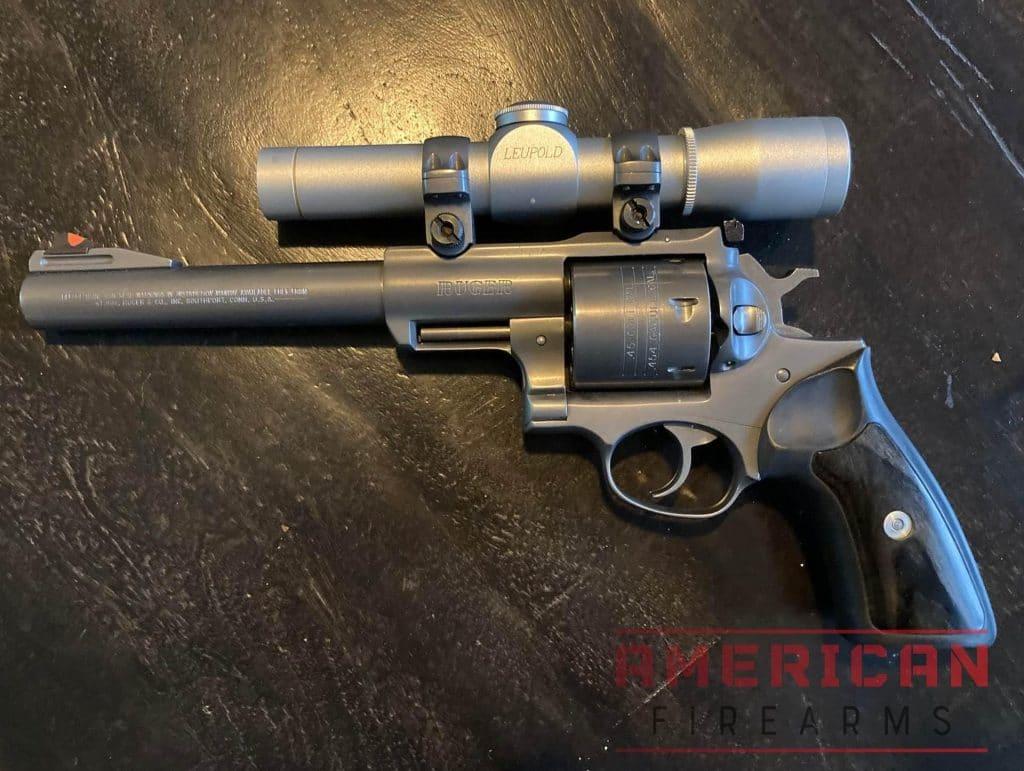
Specs:
- Caliber: .357 Magnum
- Capacity: 6
- Barrel Length: 4.2″
- Weight: 38.4 oz.
The Ruger Redhawk is a great option for deer hunters, or for a backup in black bear country, and it’s an absolute blast at the range as well.
Like the 627, it’s a bit more expensive than some of the other options on this list, but it absolutely earns its entry price. I’ve shot probably 2,000 rounds through mine over the years, and I have never once had a complaint.
3. Best First .357 Revolver: Ruger GP-100
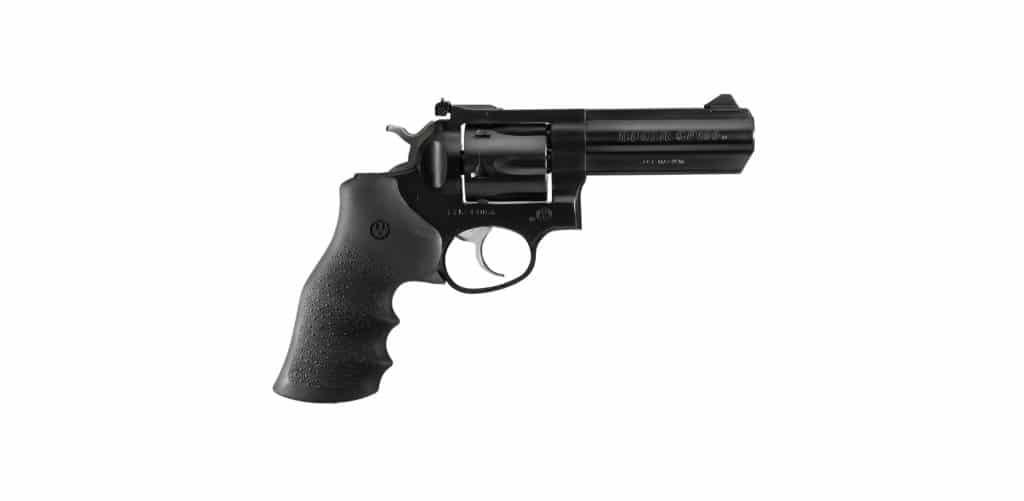
$824.99

31
AVERAGE
2025 Awards & Rankings
Performance Scores
Specs:
- Caliber: .357 Magnum
- Capacity: 6
- Barrel Length: 4.2″
- Weight: 38.4 oz.
For those looking for a slightly more approachable alternative to the two options above, Ruger has you covered with the GP-100. The four-inch barrel variant is one of Ruger’s most popular models, and it has been a standout pick for decades among serious revolver enthusiasts.
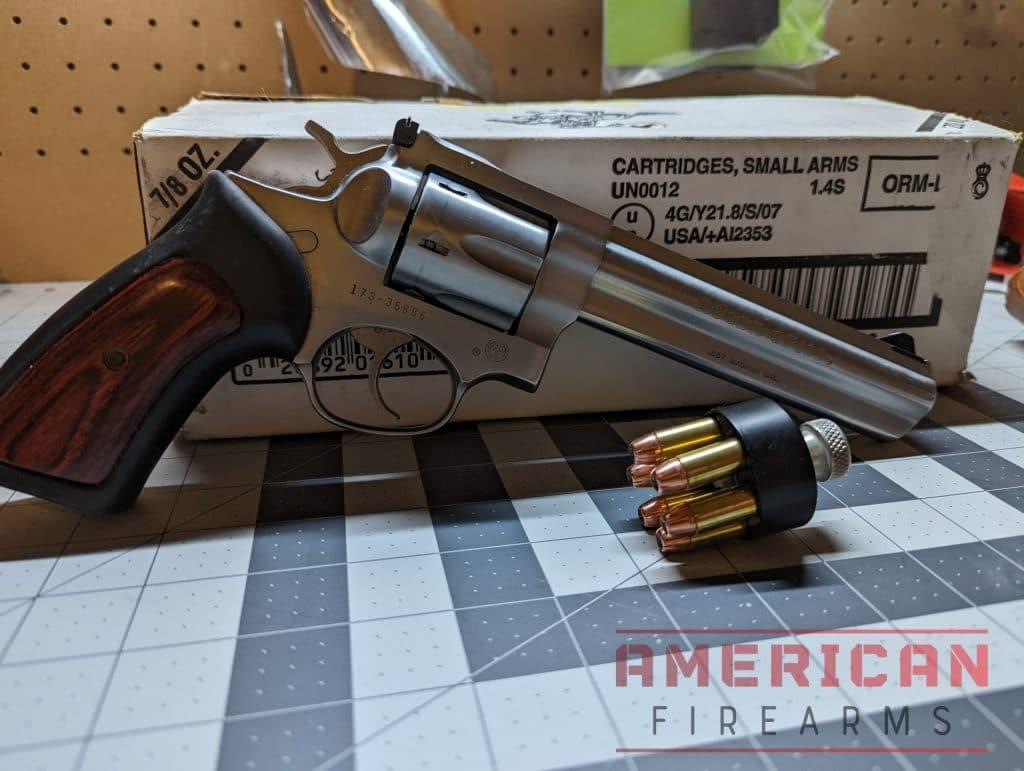
The GP-100 was actually my first revolver and is probably the one that I shoot most frequently. I linked to a fairly standard black-finished model above, but you can get a variety of different finish and grip combos, as well as a variety of different barrel lengths.
The trigger on the base model GP-100 isn’t quite as smooth as the two options above, but there’s also a Match Champion model that tunes things up a little bit with fiber optic adjustable sights and a smoother trigger. If you’re hankering for more capacity Ruger introduced 7 round models in late 2017, so that’s on the menu as well.
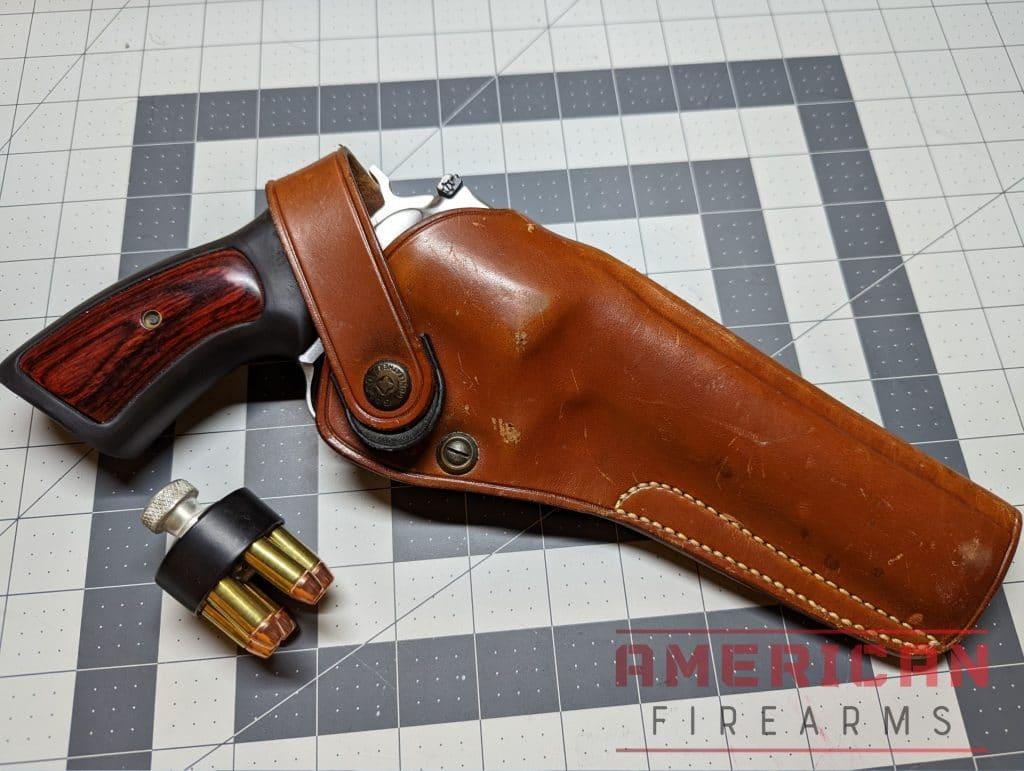
Whichever version you go with, you’ll find the GP-100 a reliable companion on the hunt, on the field of competition, or even in a bedside safe.
4. Budget Option: Ruger SP-101
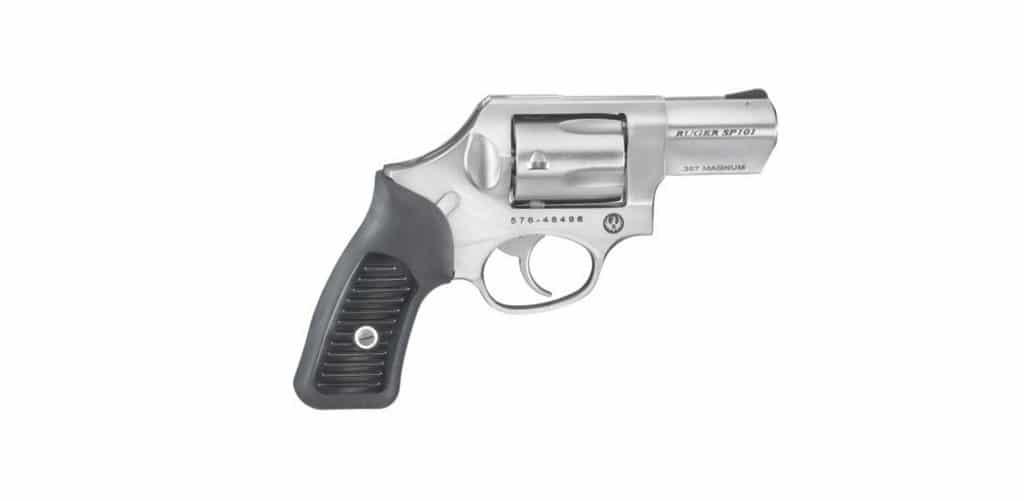
$649.99

34
AVERAGE
2025 Awards & Rankings
Performance Scores
Specs:
- Caliber: .357 Magnum
- Capacity: 5
- Barrel Length: 2.25″
- Length: 7.2″
- Weight: 25 oz.
Next up we move into something even more affordable, the Ruger SP-101. This is a very middle-of-the-road option on the price scale, but it’s still made to all the same exacting standards as every revolver Ruger makes.
It loses out a bit in the trigger department, and as far as I’m aware the base model is only available with some relatively cheap-feeling polymer grips, but this thing still blows other revolvers at this price point out of the water.
Ruger has a rep for budget-friendly guns that just work and the SP-101 is a cornerstone of that reputation. It’s not fancy, but it will go bang every time you ask it to and put rounds where they’re supposed to go.
5. Concealed Carry Pick: Ruger LCR
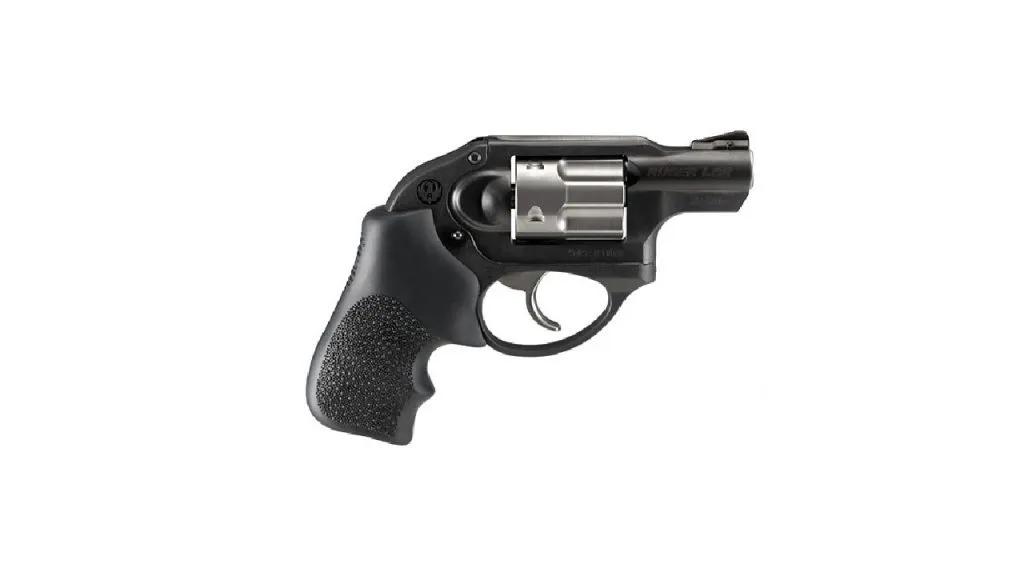
$554.99

34
AVERAGE
2025 Awards & Rankings
Performance Scores
Specs:
- Caliber: .357 Magnum
- Capacity: 5
- Barrel Length: 1.9″
- Weight: 18 oz.
This is the last Ruger revolver I’ll include…maybe.
Originally chambered in .38 Special, the LCR is Ruger’s pocket-sized defensive option, and while it is very affordable don’t confuse “cheap” with “cheaply made”. This is an excellent little concealed carry revolver, with a simple push-button cylinder release that prevents snags when carrying. I have shot and actually carried the LCR a good bit, even though my normal concealed carry is usually a 9mm semi-auto of some kind.
The Ruger LCR is a 5-shot model that does well with .357 or .38 SPL rounds, but I will say recoil is a bit snappy with hot .357 defensive rounds, and given the self defense focus there’s no rear sights available.
But if you’re looking for a backup gun, something that can live in an ankle holster, or a lightweight backpacking gun for dealing with two or four-legged predators, the Ruger LCR has got you covered.
Oh, and the version I linked above has great Crimson Trace laser grips, which I personally really like, but you can get a slightly cheaper variant without the extra laser bit.
6. Best Convertible .357: Ruger Blackhawk
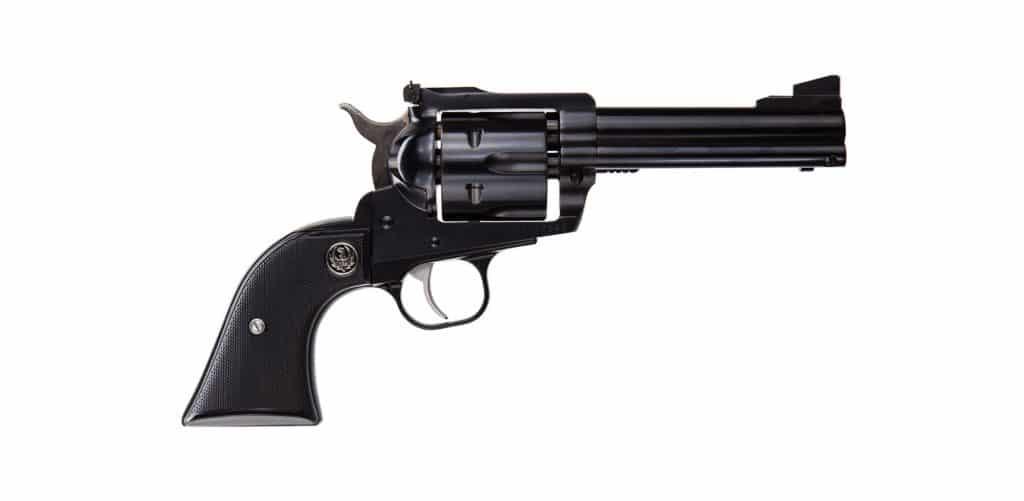
$899.99

33
AVERAGE
2025 Awards & Rankings
Performance Scores
Specs:
- Caliber: .357 Magnum
- Capacity: 6
- Barrel Length: 6.5″
- Weight: 40 oz.
Okay this is actually the last Ruger revolver on the list, I promise. They just make so many good ones!
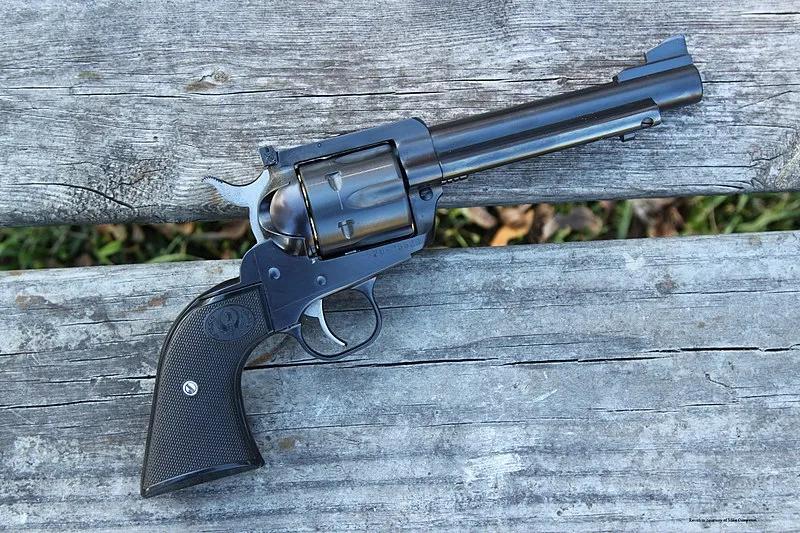
Anyway, the Ruger Blackhawk might be my favorite gun on this list just because of the sheer cool factor. It’s a single-action revolver in the style of a classic Peacemaker, and the simulated ivory gunfighter-style grips on this particular model only add to the Wild West feel.
This is a great target gun, and is an absolute blast to shoot at the range, in cowboy action competition, or just to blast a soda can off a fence post. But it has a neat trick that sets it above a lot of the other .357 revolvers out there.
It can convert to a 9mm revolver too.
That’s right, you can swap the cylinder on this bad boy (it’s included) grab a couple of moon clips, and blast away with some much more affordable 9mm ammo.
It makes an already great gun feel even better and gives you yet another option when you take it out for a spin.
7. Premium Option: Colt Python
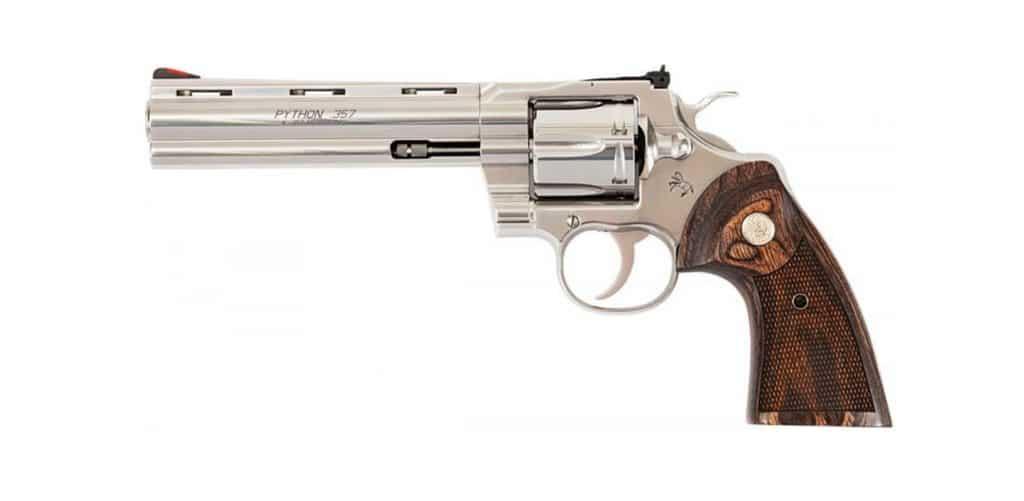
$3495.99

29
AVERAGE
2025 Awards & Rankings
Performance Scores
Specs:
- Caliber: .357 Magnum
- Capacity: 6
- Barrel Length: 6″
- Weight: 40 oz.
I saved our best revolver for last. The Colt Python, an already legendary gun made even more famous by pop culture appearances such as in The Walking Dead, is a phenomenal choice for committed revolver enthusiasts with serious money to spend.
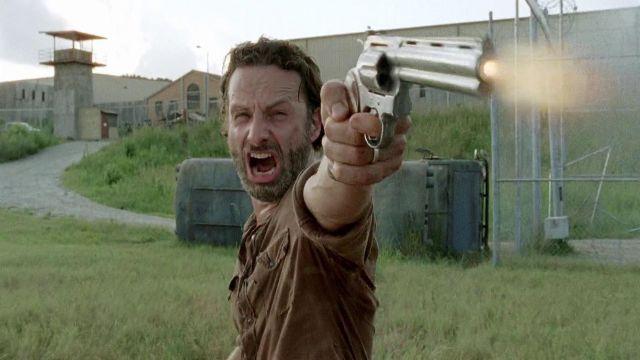
It’s expensive, but it has the best trigger of any revolver I’ve ever touched, and the single-action mode will make you weep tears of joy if you’re a trigger snob like me.
The version I’ve linked here has a beautiful stainless steel frame and six-inch barrel, and the 6-round cylinder is finished in the same style. The Walnut wood grips emblazoned with the iconic Colt medallion really bring the whole thing home.
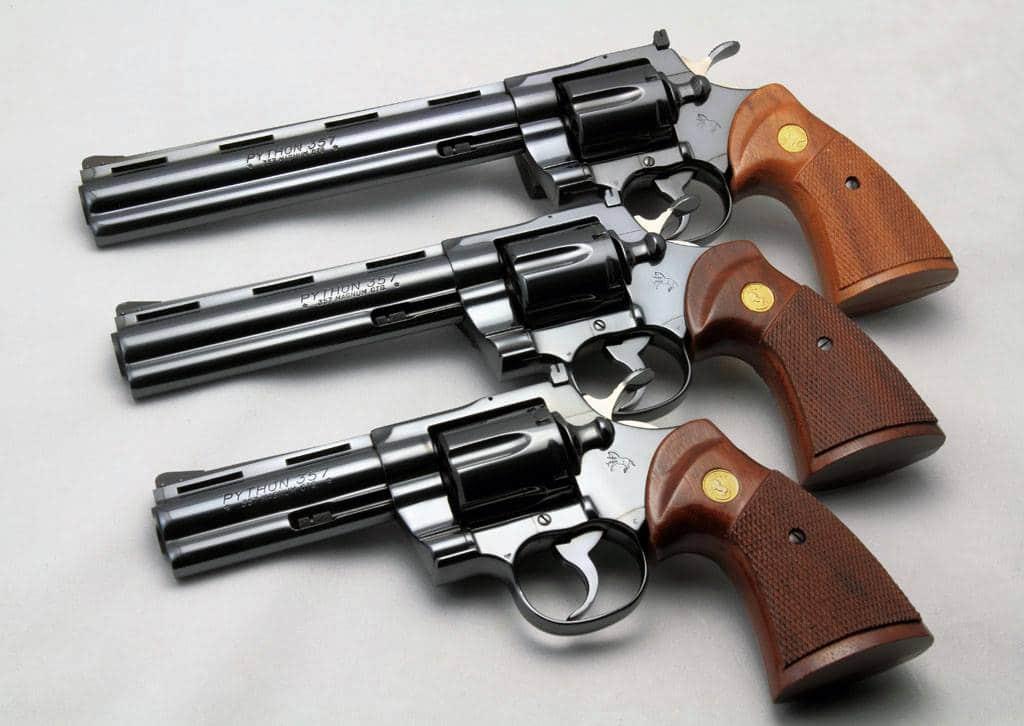
For my money, there’s not a better revolver on the planet than this one, so if you’re looking for the best of the best and are ready to put your money where your trigger finger is, this is one revolver that should be on your list.
8. Best Backpacking Lever Gun: Taylor’s & Company 1892 Alaskan Takedown
Specs:
- Caliber: .357 Magnum
- Overall Length: 34″
- Weight: 94.4 oz.
And now for something completely different.
The Taylor’s & Company 1892 Alaskan Takedown is actually a tuned-up Chiappa clone of the much-beloved Winchester Model 1892. It’s been converted into a two-piece takedown model, and is available in a blued or stainless finish, with a 20” or 24” barrel, and 10 or 12-round capacity.
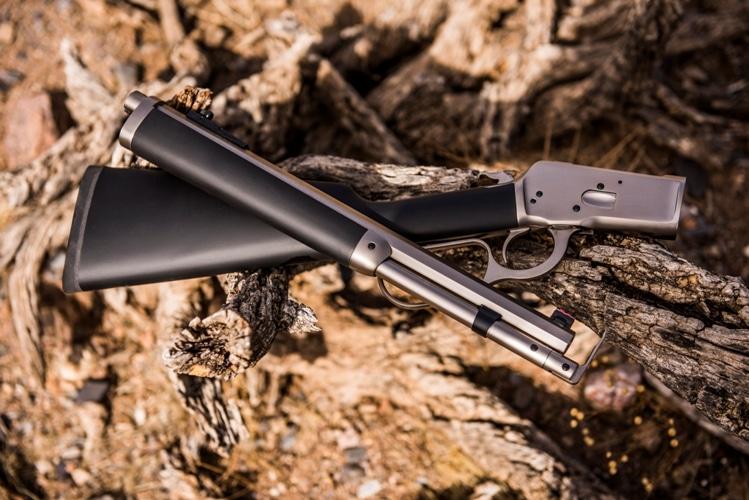
Takedown lever-actions like this are extremely popular with small aircraft pilots and crew in Arctic regions (hence the “Alaskan” part) and are a great choice for anyone who wants a lot of firepower in a very portable form factor.
9. Best Overall Lever Gun: Henry Big Boy
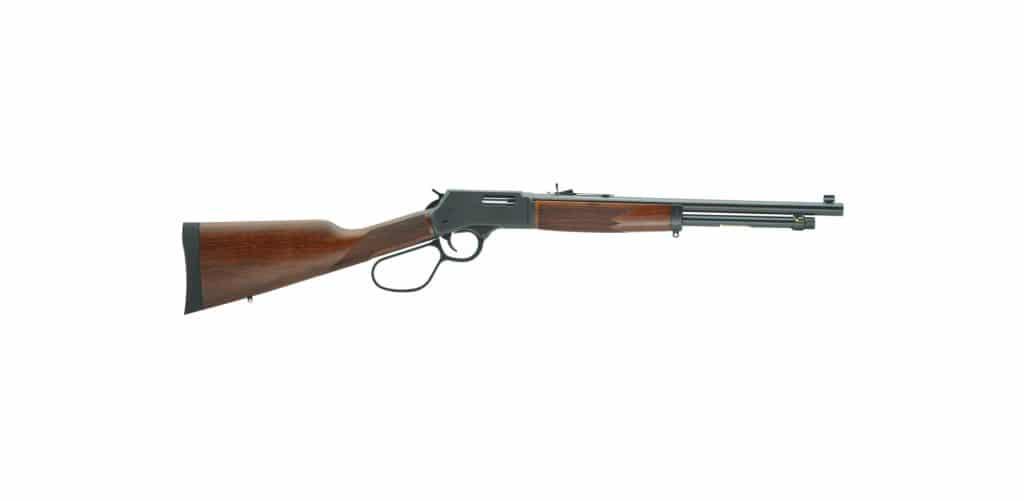
$982.99

34
AVERAGE
2025 Awards & Rankings
Performance Scores
Specs:
- Caliber: .357 Magnum
- Capacity: 7
- Overall Length: 34″
- Weight: 104 oz.
Finally, we have the legendary Henry Rifle, in particular the Henry Big Boy. This is the “damn Yankee rifle you can load on Sunday and shoot all week”, but gussied up a bit for the modern shooter.
The All-Weather version here features a nearly rust-proof stainless steel finish, a gorgeous American Walnut stock and forend, and a 10 round capacity.
I actually know a black bear hunting guide that carries this exact rifle on 50 trips a year in North Carolina when the season is in, and it has actually saved him from an angry bear on two separate occasions when clients were less-than-perfect with their aim.
I can’t really give it a better recommendation than that.
Choosing the Right .357 for You
Alright, so you’ve decided you want a .357 Magnum. Good choice. But now comes the hard part: figuring out which one is actually going to work for what you want to do with it. Trust me, there’s a big difference between a snub-nose carry gun and a 6-inch hunting revolver, and picking the wrong one for your intended use is a mistake I’ve seen plenty of folks make over the years.
Let me walk you through the main considerations so you don’t end up with a safe queen or, worse yet, a gun that doesn’t do what you need it to do.
Frame Size Quick Reference
| Frame Size | Weight Range | Barrel Length | Best For | Trade-offs |
|---|---|---|---|---|
Small | 15-25 oz | 1.87"-3" | Concealed carry backup gun | Sharp recoil limited capacity |
Medium | 30-45 oz | 3"-6" | All-around use home defense | Moderate concealment difficulty |
Large | 40-60+ oz | 4"-8" | Target shooting hunting | Heavy & difficult to conceal |
Small Frame (.357 Snubbies)
If you’re looking at something like the Ruger LCR or Smith & Wesson Model 640, you’re talking about guns that typically weigh between 15-25 ounces and have barrels under 3 inches. These are purpose-built for concealed carry, and they’re damn good at it. They disappear in a pocket or IWB holster, and they pack serious punch for their size.
But here’s the thing: shooting full-power .357 loads out of a lightweight snubby is an experience. And not necessarily a pleasant one. The recoil is sharp, the muzzle blast is impressive, and follow-up shots can be challenging. I typically load mine with .38 Special +P for carry and save the .357 loads for when I really, really need them.
Medium Frame (The Sweet Spot)
This is where most people should be looking, and it’s where you’ll find guns like the Ruger GP-100 and Smith & Wesson 686. These revolvers typically weigh 30-45 ounces and have barrels ranging from 3-6 inches. They’re large enough to tame .357 recoil but not so big that they become boat anchors.
A 4-inch medium frame .357 is probably the most versatile revolver you can own. It’s accurate enough for target work, controllable enough for defensive use, powerful enough for hunting smaller game, and with the right holster, it’s even concealable for those who don’t mind carrying a bit more weight.
Large Frame (When You Need Every Advantage)
The big boys like the Smith & Wesson Model 627 Pro are built for serious work. They typically weigh 40+ ounces and can handle an endless diet of full-house .357 loads without breaking a sweat. The extra weight soaks up recoil, making them pleasant to shoot even with hot loads.
These are fantastic guns for hunting, competition, or anyone who just wants the ultimate .357 experience. The downside? They’re heavy, they’re large, and concealing one requires some serious commitment to the revolver lifestyle.
Use Case Recommendations
Concealed Carry
Best Options: Small to medium frame, 2-3″ barrel
Top Pick, Ruger LCR (1.87″) Step Up, Ruger SP-101 (2.25″) Larger Option, GP-100 3″ (if you can handle the weight)
Pro Tip: The best carry gun is the one you’ll actually carry. Don’t go too big just because it shoots nicer at the range.
Home Defense
Best Options: Medium frame, 3-4″ barrel
Sweet Spot, 4″ medium frame revolver Capacity Boost, S&W 686+ (7 rounds) or Model 627 Pro (8 rounds) Budget Option, Taurus 66 (7 rounds)
Important: .357 loads indoors are extremely loud and will penetrate walls. Choose your ammunition accordingly.
Hunting & Field Use
Best Options: Medium to large frame, 4-6″ barrel
Versatile, Ruger Super Redhawk 4.2″ Maximum Power, 6″ barrel options for extra velocity Trail Gun, Any robust 4″ medium frame
Target Shooting & Competition
Best Options: Large frame, 6″+ barrel
Precision, S&W Model 627 Pro Competition, Ruger GP-100 Match Champion Old School, Colt Python 6″
How Barrel Length Impacts Velocity
| Barrel Length | Velocity Impact | Concealability | Accuracy | Best Use |
|---|---|---|---|---|
1.87"-2" | -200 fps from 4" | Excellent | Good | Deep concealment |
2.25"-3" | -150 fps from 4" | Very Good | Very Good | Carry/backup |
4" | Baseline | Good | Excellent | All-around |
6" | +100 fps from 4" | Poor | Excellent | Target/hunting |
8"+ | +150 fps from 4" | Very Poor | Outstanding | Hunting/competition |
Real World Example: A .357 load doing 1,250 fps from a 4″ barrel drops to about 1,050 fps from a 2″ barrel. That’s why many people stick with .38 Special +P in snubbies.
Action Type Comparison
| Action Type | Trigger Options | Speed | Accuracy | Best For |
|---|---|---|---|---|
DA/SA | Both options | Fast (DA) Precise (SA) | Excellent (SA) | Most versatile |
DAO | Consistent pull | Fast | Good | Carry guns |
SA Only | Best triggers | Slower | Outstanding | Competition/hunting |
Double Action/Single Action (Most Popular)
Pros: Versatile, fast DA for defense, precise SA for accuracy
Cons: More complex mechanism
Best For: General use, hunting, competition
Double Action Only (Carry Focused)
Pros: Simple, consistent trigger, no snagging hammer
Cons: Heavier trigger pull, no precision SA option
Best For: Concealed carry, backup guns
Single Action Only (Traditional)
Pros: Best trigger quality, classic appeal
Cons: Slower to shoot, requires manual cocking
Best For: Competition, hunting, collecting
Ammunition Selection & Performance
One of the best things about owning a .357 Magnum revolver is the sheer variety of ammunition you can feed it. From light-recoiling .38 Special target loads to full-house .357 hunting rounds, you’ve got options for just about every situation you can think of. But with great power comes great responsibility—and in this case, that responsibility is knowing which load to use when.
Let me break down what you need to know about .357/.38 ammunition so you can make smart choices for your specific needs.
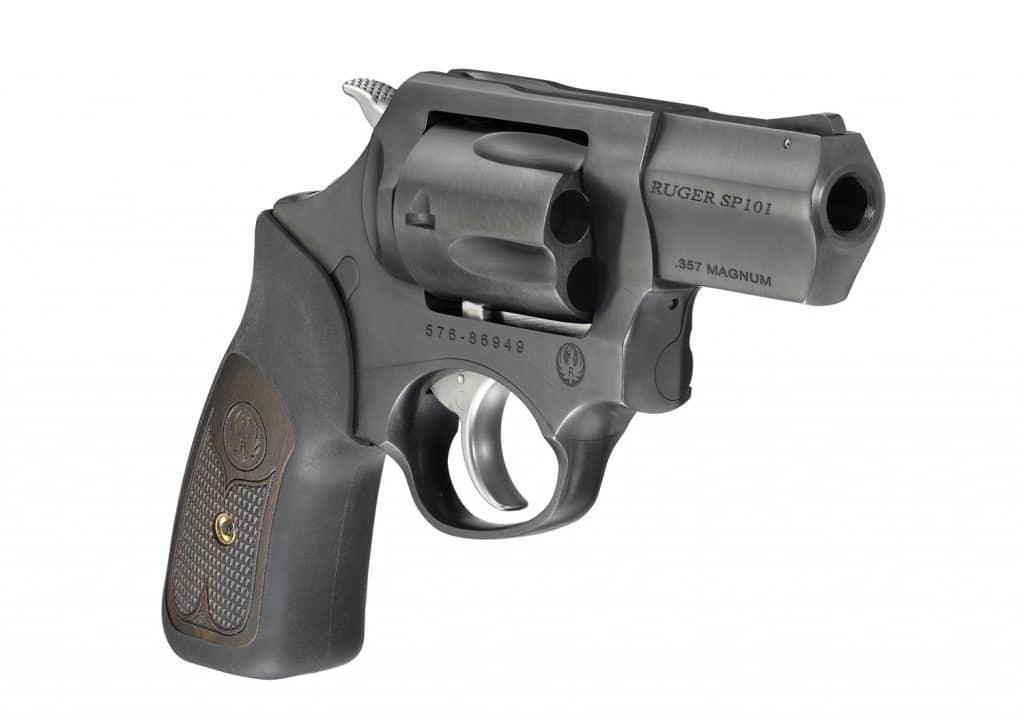
The .38 Special Foundation
Before we dive into the magnum stuff, let’s talk about .38 Special. This is going to be your bread and butter for practice, and it’s probably what you’ll shoot most of the time. The .38 Special case is shorter than the .357 Magnum case, which means you can safely shoot it in any .357 revolver. The reverse isn’t true—never try to chamber a .357 in a gun marked only for .38 Special.
Standard .38 Special Your basic .38 Special load pushes a 158-grain bullet at around 755 fps from a 4-inch barrel, generating about 200 foot-pounds of energy. It’s mild-mannered, easy to shoot, and perfect for new shooters or extended practice sessions.
+P .38 Special The +P designation means it’s loaded to higher pressure than standard .38 Special. A typical +P load will push that same 158-grain bullet to around 890 fps, bumping energy up to about 280 foot-pounds. It’s still manageable to shoot but gives you noticeably more power.
+P+ .38 Special This is as hot as .38 Special gets, and it’s getting into serious business territory. Some +P+ loads approach .357 Magnum performance levels. Not all revolvers are rated for +P+, so check your manual before you start feeding your gun a steady diet of this stuff.
.357 Magnum Performance
Now we’re talking real power. The .357 Magnum was designed to be a significant step up from .38 Special, and it delivers on that promise.
Standard .357 Magnum Loads A typical 158-grain .357 load will hit around 1,235 fps from a 4-inch barrel, generating roughly 535 foot-pounds of energy. That’s more than double the energy of standard .38 Special, and you’ll definitely feel the difference when you pull the trigger.
Heavy .357 Loads Step up to 180-grain bullets, and you’re looking at velocities around 1,080 fps with energy in the 465 foot-pound range. These heavier bullets penetrate deeper and are excellent for hunting or situations where you need maximum penetration.
Light .357 Loads On the other end of the spectrum, 110-grain bullets can scream along at 1,295 fps, generating about 410 foot-pounds. These are fast, flat-shooting, and have less recoil than heavy bullets, making them popular for some defensive applications.
Velocity and Energy by Barrel Length
| Barrel Length | .38 Special (158gr) | .38 +P (158gr) | .357 Magnum (158gr) | .357 Magnum (125gr) |
|---|---|---|---|---|
2" | 650 fps / 148 ft-lbs | 780 fps / 213 ft-lbs | 1050 fps / 387 ft-lbs | 1220 fps / 413 ft-lbs |
3" | 720 fps / 182 ft-lbs | 850 fps / 253 ft-lbs | 1150 fps / 463 ft-lbs | 1320 fps / 484 ft-lbs |
4" | 755 fps / 200 ft-lbs | 890 fps / 278 ft-lbs | 1235 fps / 535 ft-lbs | 1450 fps / 583 ft-lbs |
6" | 820 fps / 236 ft-lbs | 960 fps / 323 ft-lbs | 1340 fps / 630 ft-lbs | 1550 fps / 667 ft-lbs |
Key Takeaway: Barrel length makes a huge difference with .357 Magnum. You lose significant velocity and energy as barrel length decreases, which is why many people stick with .38 Special +P in snubbies.
Load Recommendations by Use
Target Shooting and Practice For range work, you want accuracy, low recoil, and economy. Standard .38 Special with 148-grain wadcutter bullets is hard to beat. These bullets cut clean holes in paper, have minimal recoil, and won’t break the bank. Expect to pay around $0.50-$0.70 per round for quality target ammo.
Load Types, Bullet Weight, Typical Use, Cost per Round .38 Special Wadcutter, 148gr, Target shooting, $0.50-$0.70 .38 Special LRN, 158gr, Practice/plinking, $0.40-$0.60 .38 +P JHP, 125-158gr, Practice with defensive ammo, $0.80-$1.20
Concealed Carry and Home Defense This is where things get interesting. You want reliable expansion, adequate penetration, and manageable recoil for follow-up shots. In small revolvers, I actually prefer .38 Special +P with a good hollow point. In larger revolvers, .357 Magnum defensive loads are excellent, but be prepared for the blast and recoil.
Popular Defensive Loads:
- .38 +P: Speer Gold Dot 135gr, Federal HST 130gr
- .357 Magnum: Federal HST 158gr, Hornady Critical Defense 125gr
Load Types, Bullet Weight, Expansion, Penetration, Best For .38 +P JHP, 125-135gr, Good, 12-14″, Small revolvers .357 Mag JHP, 125gr, Excellent, 11-13″, Medium/large revolvers .357 Mag JHP, 158gr, Good, 14-16″, All revolvers/barriers
Hunting and Field Use For hunting, you want deep penetration and reliable performance on game. Heavier bullets generally perform better on larger animals, while lighter bullets work fine for smaller game and offer flatter trajectories.
Hunting Load Recommendations:
- Deer/hogs: 158-180gr soft point or bonded bullets
- Small game: 125-140gr soft point
- Dangerous game backup: 180gr hard cast or bonded
Load Types, Bullet Weight, Game Type, Notes .357 Mag SP, 125-140gr, Small game, Flat trajectory good accuracy .357 Mag SP, 158gr, Deer-sized game, Most versatile hunting load .357 Mag Hard Cast, 180gr, Large/dangerous game, Maximum penetration
Understanding Recoil and Practical Considerations
Here’s something the ballistics tables don’t tell you: felt recoil varies dramatically based on your gun and the ammunition you choose. A 125-grain .357 load might have less energy than a 158-grain load, but it often feels snappier due to the faster burning powder and higher peak pressure.
Recoil Management Tips:
- Heavier revolvers absorb recoil better
- Longer barrels reduce muzzle blast and flip
- Rubber grips help more than wood grips
- 158-grain bullets tend to have the most manageable recoil in .357
Cost Considerations
Let’s be honest—.357 Magnum ammunition isn’t cheap, especially compared to 9mm or .22 LR. Here’s what you can expect to pay:
| Ammunition Type | Price Range per Round | When to Use |
|---|---|---|
.38 Special Target | $0.40-$0.70 | Practice/training |
.38 Special +P | $0.80-$1.20 | Carry practice/backup loads |
.357 Magnum Practice | $0.90-$1.40 | Magnum training |
.357 Magnum Premium | $1.50-$2.50 | Hunting/premium defense |
This is why most .357 owners do the majority of their shooting with .38 Special. You can practice fundamentals with the cheaper ammo, then confirm your defensive or hunting loads with a cylinder or two of the good stuff.
My Personal Recommendations
For most shooters, I recommend starting with a good supply of standard .38 Special for practice, a box or two of .38 Special +P for testing, and a cylinder’s worth of quality .357 Magnum defensive or hunting loads appropriate for your intended use.
Don’t get caught up in the “bigger is always better” mentality. A well-placed .38 Special +P is infinitely more effective than a .357 Magnum that misses because you can’t handle the recoil.
Start mild, work your way up, and find what works best in your specific revolver. Every gun has its preferences, and the only way to find out what yours likes is to feed it a variety of ammunition and see what groups best.
Bottom Line: The .357 Magnum gives you options, but with those options comes the responsibility to choose the right tool for the job. Master the .38 Special loads first, then graduate to the magnum stuff when you’re ready for it.
Must-Have .357 Magnum Gun Features
When choosing your own .357 Magnum, there are some things I’d suggest you look at first.
Double-Action Revolvers Rock

First and foremost, if you’re looking at a revolver, I strongly recommend getting a double-action model, unless you’re specifically looking for that old-school cowboy aesthetic. Which is fine by the way, but it isn’t for everyone.
A double-action revolver will allow you to fire more quickly, but still have the option of manually cocking the exposed hammer to get a smoother and lighter trigger pull for those carefully aimed shots, especially at long range.
Since one of the big draws of a .357 Magnum is its versatility, the double-action format is a great choice for a revolver, unless you specifically want the full-on single action revolver cowboy experience for a range gun.
Safety First

None of the wheelguns on this list have a traditional external safety, but they do all have some extra features that help to keep the shooter and those around them safe.
One common feature that you’ll see is a transfer bar safety. A transfer bar is a thin piece of metal that gets raised into position between the hammer and the firing pin when the trigger is fully depressed. The hammer then contacts this piece, which is what strikes the firing pin.
This is important because the other option is to have the firing pin either attached to the hammer or otherwise directly impacted by the hammer when it falls after the trigger is pulled. And if that’s the way the revolver is set up, then any impact to the hammer could cause the revolver to fire.
Fortunately, most modern revolvers do have this transfer bar, so it’s not a huge deal with most newer guns. You will want to keep this in mind when looking at replicas of older guns, single-action models in particular.
This is why you may have heard “never carry a revolver with the hammer down on a loaded chamber”. You can absolutely do this safely, just make sure your revolver actually has a transfer bar.
Types of Firearms Which Shoot the .357 Magnum
There are two main types of firearms that shoot .357 Magnum, revolvers and lever-actions.
.357 Revolvers: An American Classic

Most revolvers have a capacity of 6 or in some cases 8 rounds, and have a rotating cylinder that revolves (hence the name) to line up a new cartridge to be fired. This is a classic design, and a pretty integral part of American history.
.357 Revolvers in particular were popular with police for decades until they started being supplanted by more modern semi-autos in the 1960’s and 1970’s.
Lever-Action .357s: Also An American Classic, Sorta

Lever-Action .357 have been around for a while as well, with older Marlin, Winchester, and Henry Models showing up on the market in the later 1930s.
Today, these guns are popular with hunters, as well as those who just like the feel and experience of shooting a classic lever-action. The .357 is especially nice in this capacity as it’s a good bit cheaper than most other lever-action rifle rounds, and softer shooting to boot.
A Note About Semi-Autos
Given the length and rimmed case nature of the .357 Magnum, it doesn’t really lend itself well to a semi-automatic format.
That hasn’t stopped some smart folks from making it work in a semi-auto though. In particular, the Coonan semi-auto stands out for it’s 1911-style design. While undoubtedly cool, only a few thousand were ever made, making it a bit of a collector’s item.
The other option is the Desert Eagle .357 which, while excellent, didn’t quite make the list due to some reliability issues I had with the one I tested. Now, that was a range gun with a lot of miles on it, and I was shooting old reloads, but generally the gun is a little niche for me to have much time with it.
Now, Magnum Research, if you want to get one of these out to me, I’ll be more than happy to take a look at another one.
Shortcomings & Issues with the .357 Magnum
As much as I love the .357 Magnum, I do also have to warn you about some issues with the caliber.
The first is that, while revolvers are great, they do lag behind a bit in terms of defensive firepower. For that reason, .357 isn’t a go-to option for many when it comes to carry or home defense anymore – especially when you can easilly get 15 or more rounds on tap with a semi auto.
The other big issue is recoil. This may not be an issue if you’re hunting, but in a defensive situation, heavy recoil means more time between shots unless you’re at or near point-blank range.
What You Get For Your Money
- Under $400: This is the real of small, defensive revolvers generally speaking, and a good place to look if you’re looking for a carry option. Beware super cheap options from less-than-reputable manufacturers, but a careful eye will definitely find some gems here. You’ll find Taurus revolvers, the Charter Arms Mag Pug and concealed carry options with black rubber grips and a fixed rear sight at this price point.
- $400-$1,000: This is where most .357 revolvers will clock in at. The extra money gets you things like a better trigger, an all-steel frame, much better sights (no fixed sights here), and nice additions like real hardwood grips. This is also where you’ll find most of your standard-issue leverguns. You’ll see products like the Ruger Security Six, some Taurus guns, and Ruger’s LCR in this price range.
- $1000+: The realm of professional tools and collector’s items. Revolvers in this category are going to be extremely high-quality and suited to serious target shooting or hunting, often featuring a barrel shroud or ported barrel and other special touches designed to help these guns perform at the highest levels. You’ll also find some high-end lever-actions in this price bracket marketed towards professional hunters. Brands in this space will from the likes of Dan Wesson, Ruger, and Smith & Wesson revolvers as well as more exotic revolvers like the Chiapa Rhino, which uses a unique design to reduce muzzle flip, or collectibles like the Colt Single Action Army.
How We Selected These Recommendations
I’ve been shooting revolvers chambered in .357 Magnum for over two decades, and either own or have owned most of the guns on this list, and the ones I haven’t personally owned I’ve either borrowed from family (thanks to my father and father-in-law).
I love this caliber and all the revolvers and guns on this list, and I had a great time exploring the best revolvers in this caliber more thoroughly to put together these recommendations
Sources
- American Rifleman. (2010) The History of the .357 Magnum
- GunDigest. (2016) The .357 Magnum: 20th Century Handgun and Cartridge
- AllShooters. (2017) Ruger introduces the 7-round GP100 in .357 Mag
- American Rifleman (2021) This Old Gun: Smith & Wesson Registered Magnum
- AllShooters (2021) Smith & Wesson revolver frame sizes
Updated
March 13, 2023 — We’ve reviewed this guide and stand by our .357 Magnum recommendations. We’ve updated images and links where appropriate.
Sign up for our newsletter
Get discounts from top brands and our latest reviews!

